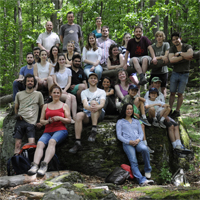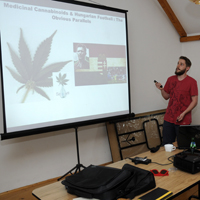|
ICRS conference in Bloomington 07/07/2025 |
|
The Katonalab participated at the 35th conference of the International Cannabinoid Research Society held in Bloomington. Diána Dimén and Zsolt Lele delivered lectures, Caroline Shumaker, Dani Nagy and Samu Szabó presented posters. Eszter Horváth also gave a short introduction of her poster at the Data Blitz session. Beside the exciting conference program, we had the opportunity to visit the ‘other half’ of our lab at the Department of Psychological and Brain Sciences, Indiana University Bloomington, walk around the amazingly green University Campus and grab some Modelos at the student bars in the evenings. |
|
A new collaborative study published in Frontiers in Pharmacology 03/06/2025 |
|
|
|
Congratulations to Susanne Prokop on winning the Academy Youth Prize! 02/21/2025 |
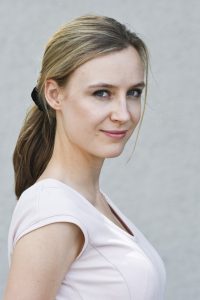 Twenty-five young researchers have been awarded the prestigious Academic Youth Prize of the Hungarian Academy of Sciences this year. We are proud that Susanne received the Prize for her work on the development of a high-resolution microscopic method to visualise target proteins of psychiatric drugs. Twenty-five young researchers have been awarded the prestigious Academic Youth Prize of the Hungarian Academy of Sciences this year. We are proud that Susanne received the Prize for her work on the development of a high-resolution microscopic method to visualise target proteins of psychiatric drugs. |
|
A new collaborative study in Science Advances 11/08/2024 |
|
The study is a follow up of a previous publication showing nanoscale molecular changes of synaptic endocannabinoid signalling in the ventral tegmental area of offspring exposed to placental cannabis (Frau and Miczán et al, 2019, Nature Neuroscience). Here, in collaboration with Miriam Melis (University of Cagliari) and Joe Cheer (University of Maryland) we show that placental cannabis exposure induced hyperdopaminergia also affects the dopaminergic and the behavioural response to natural rewards and synthetic opioids (Lujan et al. 2024, Science Advances) |
|
Congratulations to Benjamin Barti! 09/30/2024 |
|
Congratulations to Beni on defending summa cum laude his PhD thesis: “Regulation of the tonic endocannabinoid signaling pathway in hippocampal inhibitory cells”. Beni completed his PhD studies at the János Szentágothai Neurosciences Doctoral School of the Semmelweis University. |
|
Welcome to Caroline! 08/12/2024 |
|
We are happy to welcome Caroline Shumaker from Indiana University Bloomington! Caroline will strengthen our projects with her expertise in bioinformatics. We wish Caroline a pleasant and fruitful time in Budapest! |
| Our new study is highlighted on the cover of Science Advances’ May issue
05/29/2024 |
|
We are delighted to announce that our new study on cannabinoid signaling led by Benjamin Barti appeared on the cover of Science Advances. We developed an approach in which we measured the physiological, the anatomical and the nanoscale molecular parameters from a single synapse in the brain. This helped us to discover a new molecular principle controlling the strength of synapses and we also showed that the psychoactive substance in cannabis affects this mechanism thereby changing synaptic activity.
Congratulations to Benjamin and all co-authors!
Link to the study:
|
| New success at the Semmelweis University Scientific Student Competition12/02/2024 |
We proudly congratulate Dárius Leszkó and his supervisors, Susanne Prokop and István Katona for winning II. Prize at the Biophysics Session of the Semmelweis University Scientific Student Competition. supervisors, Susanne Prokop and István Katona for winning II. Prize at the Biophysics Session of the Semmelweis University Scientific Student Competition. |
| Susanne Prokop is awarded the prestigious Junior Prima Prize
11/27/2023 |
| We are really proud that Susanne’s dedication and hard work has led her to win the Junior Prima Prize in Hungarian science category!
|
| Dárius Leszkó wins first prize at Semmelweis University Korányi Frigyes Scientific Forum
03/18/2023 |
| Congratulations to Dárius for winning first prize at the ‘Translational medicine and diagnostics’ Sections of the 27th Korányi Frigyes Scientific Forum of the Semmelweis University. |
| Special issue of “Cell adhesion molecules in neural development and disease” coedited by Robert Hindges from King’s College London and Zsolt Lele
02/16/2023 |
|
This special issue of Frontiers in Neuroscience features the diverse roles of cell adhesion molecules spanning from the well-known adhesion and mechanical stabilization to initiation of intracellular signaling cascades or acting as extracellular signaling molecules after cleavage.
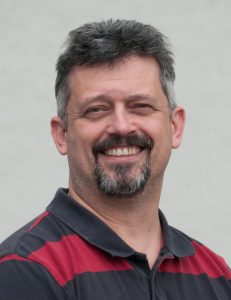 Zsolt Lele together with his former PhD student, Zsófia László also authors a review in this special issue. They summarize recent advances in the field of N-cadherin research: “Flying under the radar: CDH2 (N-cadherin), an important hub molecule in neurodevelopmental and neurodegenerative diseases”. |
| New success at the Semmelweis University Scientific Student Competition
02/11/2023 |
We proudly congratulate Dárius Leszkó and his supervisors, Susanne Prokop and István Katona for winning I. Prize at the Biochemistry Session of the Semmelweis University Scientific Student Competition and qualifying to participate at the 36th National Scientific Student Competition (OTDK). supervisors, Susanne Prokop and István Katona for winning I. Prize at the Biochemistry Session of the Semmelweis University Scientific Student Competition and qualifying to participate at the 36th National Scientific Student Competition (OTDK). |
| Szentágothai Day at the University of Pécs
11/14/2022 |
| Our PI had the honour to be an invited speaker at the Szentágothai Day commemorating the 10th anniversary of the János Szentágothai Research Centre of the University of Pécs. István presented the group’s latest achievements in his talk entitled: Nanoscale integration of functional anatomy and pharmacology by super-resolution imaging. |
| Our PI’s lecture at Stanford University
11/07/2022 |
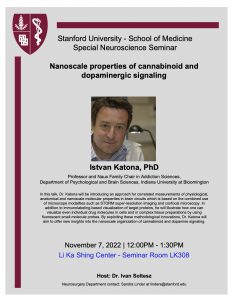 Istvan has been invited to present our new achievements at the Special Neuroscience Seminar of the Stanford University, School of Medicine. Beside introducing the PharmacoSTORM method, he also summarized the discoveries made possible by this methodological innovation on the nanoscale architecture of the endocannabinoid and dopaminergic signaling systems. Istvan has been invited to present our new achievements at the Special Neuroscience Seminar of the Stanford University, School of Medicine. Beside introducing the PharmacoSTORM method, he also summarized the discoveries made possible by this methodological innovation on the nanoscale architecture of the endocannabinoid and dopaminergic signaling systems. |
| Our new paper in Endocannabinoid Signaling: Methods and protocols
09/25/2022 |
|
Miki Zöldi and István Katona give a comprehen
|
| A new article is published in collaboration with the lab of Ádám Dénes
09/20/2022 |
| The study elucidates the pivotal role played by P2Y12 receptors on microglial processes in neurodevelopment by establishing junctions with cell bodies of developing neurons throughout embryonic, early postnatal, and adult neurogenesis. For further reading, please, refer to:
https://www.cell.com/cell-reports/fulltext/S2211-1247(22)01201-3 Graphical abstract of the paper: |
| Susanne Prokop successfully defended her PhD dissertation 06/29/2022 |
| Congratulations to Susanne on defending summa cum laude her PhD dissertation titled “Advanced fluorescent ligand-based techniques for the pharmacological and anatomical examination of dopamine receptors”.
Susanne completed her PhD studies at the János Szentágothai Neurosciences Doctoral School of the Semmelweis University. |
| Susanne Prokop’s success at the 6th ERNEST meeting
04/01/2022 |
|
We are proud that Susanne’s presentation won the best Early Carrier Investigator lecture prize at the 6th |
|
Márton Vámosi wins first prize at Semmelweis University’s Rector’s Award 01/04/2022 |
| Congratulations to Márton for winning the Rector’s Award!
Marci is in his final year |
| Susanne Prokop receives the Institute of Experimental Medicine’s Young Investigator Award
12/17/2021 |
| Congratulations to Susanne for winning the Young Investigator Award!
With this prize the Institute of Experimental Medicine rewards each year thre |
| A new paper from @Katonalab in Nature Communications!
10/15/2021 |
| We are delighted to share the news that our latest study was just published in the prestigious journal Nature Communications!
The study introduces PharmacoSTORM a novel method based on fluorescent small molecule pharmacoprobes (receptor ligands and enzyme inhibitors) and STORM super-resolution imaging. By using the logic of autoradiography and combining its quantitative strengths with the power of immunostaining for the visualization of cellular and subcellular profiles in intact brain circuits, PharmacoSTORM makes nanoscale pharmacological measurements possible in a cell-type- and subcellular compartment-specific manner. We demonstrated broad applicability of PharmacoSTORM for GPCRs, ion channels and enzymes. Most importantly, PharmacoSTORM revealed that the major binding sites of cariprazine, a novel antipsychotic and antidepressant are the D3 dopamine receptors located on the axons of the Islands of Calleja granule cells. The physiological role and the neuropsychiatric significance of the Islands of Calleja are not well understood. Therefore, our new study has important translational impact by postulating that a major mechanism of action of cariprazine treatment is the regulation of the dopaminergic control of the outputs of the Islands of Calleja granule cells via D3 receptor binding. The first author of the study is Susanne Prokop, an exceptional graduate student in our lab. Several other former and current lab members contributed to this work including Benjámin Barti, Márton Vámosi, Miklós Zöldi, László Barna, Gabriella Urbán and Barna Dudok. We are very grateful for the valuable contribution of our wonderful collaborators at the Keserű lab, at the van der Stelt lab, at the Hunyady lab and Gian Marco Leggio. |
|
The @Katonalab at the Cannabinoid Gordon Research Conference 10/12/2021 |
| The first in-person conference after the long period of social isolation was a tremendous success in all regards. The talks of the terrific line-up of world class speakers and the more than 100 exciting unpublished posters helped to gain new knowledge on technology and to understand the conceptual framework in several hot topics of neuroscience in Ventura, California for 4 days. Between-session discussions helped to launch four new collaborative projects with outstanding investigators of complementary expertise.István Katona, our PI received the honor from the cannabinoid community to give the Keynote Talk together with Prof. Bryan Roth, a towering figure of the GPCR field and of chemogenetic interrogation of neuronal activity on the first evening.
The @Katonalab presented three major unpublished projects. István introduced PharmacoSTORM, our new approach to perform cell-type-specific nanoscale pharmacology in complex brain circuits. Benjámin Barti presented our on-going research on tonic cannabinoid signaling and Miklós Zöldi shared his new methodology for nanoscale imaging of astrocytes. As icing on the cake, the best poster prizes of the Cannabinoid GRC was received by Benjámin Barti, and by Barna Dudok, former graduate student of the @Katonalab, who is now a postdoc at Stanford University. Congrats! |
| New success at the National Student Competition
04/12/2021 |
Congratulations to Márton Vámosi and his supervisor, 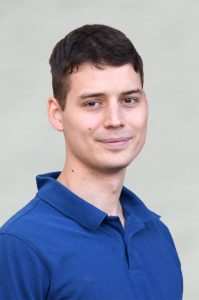 Susanne Prokop for winning II. Prize at the Medical Session of the 35th National Scientific Student Competition OTDK in the Cellular Biology and Physiology category. Susanne Prokop for winning II. Prize at the Medical Session of the 35th National Scientific Student Competition OTDK in the Cellular Biology and Physiology category. |
|
Vivien Miczán successfully defended her PhD dissertation 01/11/2021 |
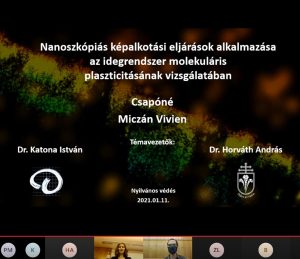 Congratulations to Vivi on defending her PhD dissertation titled “Studying the molecular plasticity of the nervous system using nanoscopy”! Vivi completed her PhD studies at Roska Tamás Doctoral School of Sciences and Technology of the Pázmány Péter Catholic University Faculty of Information Technology and Bionics. Her PhD work was supervised by dr. István Katona and dr. András Horváth. Congratulations to Vivi on defending her PhD dissertation titled “Studying the molecular plasticity of the nervous system using nanoscopy”! Vivi completed her PhD studies at Roska Tamás Doctoral School of Sciences and Technology of the Pázmány Péter Catholic University Faculty of Information Technology and Bionics. Her PhD work was supervised by dr. István Katona and dr. András Horváth.
|
|
New collaborative paper published in Neurobiology of Disease: “Detrimental impacts of mixed-ion radiation on nervous system function” 01/05/2021 |
|
In this NIH funded collaboration with the labs of Prof. Charl |
|
Members of our team join the new Bloomington lab 01/04/2021 |
|
Our young colleagues, Petra Aradi, Diana Dimen, Benjamin Barti and Miklos Zoldi are excited to start their work at Istvan Katona’s new „Addiction and Neuroplasticity laboratory” at the Department of Psychological and Brain Sciences, Indiana University. |
|
Congratulations to Zsófia László on winning the Junior Prima Award in Science! 12/10/2020 |
|
The Junior Prima Prize in Science was founded in 2007 by the Hungarian Development Bank. It is awarded every year to ten young scientists for their outstanding scientific achievement. We are really proud and happy that Zsofi’s pivotal work on uncovering the protective role of the endocannabinoid enzyme ABHD4 during brain development has been recognised by this prestigious prize.
|
| A new paper from our lab in Cerebral Cortex11/24/2020 |
|
For further reading please see the |
| Congratulations to Zsófia László on successfully defending her PhD thesis!09/15/2020 |
|
Dear Zsófi, we wish you a lot of success for the forthcoming years! You have been the engine and heart of the lab and we will definitely miss you a lot!
|
|
Success at the Semmelweis University Scientific Student Competition 09/04/2020 |
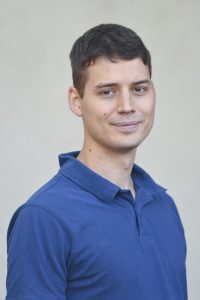 We proudly congratulate Márton Vámosi and his supervisor, Susanne Prokop for winning I. Prize at the Neurobiology Session of the Semmelweis University Scientific Student Competition and qualifying to participate at the 35th National Scientific Student Competition OTDK. We proudly congratulate Márton Vámosi and his supervisor, Susanne Prokop for winning I. Prize at the Neurobiology Session of the Semmelweis University Scientific Student Competition and qualifying to participate at the 35th National Scientific Student Competition OTDK. |
| A new paper in Nature Communications identifies the protective role of the endocannabinoid enzyme ABHD4 against pathological insults during brain development
08/31/2020 |
| We are delighted to announce that one of our major research projects has now been published in Nature Communications.
During a difficult, but very rewarding scientific journey, Zsófia László and Zsolt Lele, the main authors of the paper, discovered a new safeguarding mechanism that we termed developmental anoikis. This process is conceptually analogous to anoikis, a detachment-induced form of apoptosis that is the central protective mechanism against pathological forms of epithelial-mesenchymal transition. By using an arsenal of state-of-the-art methods such as in utero electroporation and correlated confocal and super-resolution imaging, and with the help of other lab members such as Miklós Zöldi, Vivien Miczán and Fruzsina Mógor, they succeded in identifying the serine hydrolase abhydrolase domain containing 4 (ABHD4) as an essential molecular player in this protective mechanism. ABHD4 is expressed in radial glia progenitor cells and triggers apoptosis upon abnormal delamination of these cells thereby preventing pathological developmental processes. Importantly, the rapid downregulation of ABHD4 was observed following neuronal cell fate commitment under normal conditions indicating that the delaminated daughter neuroblasts escape from anoikis by silencing ABHD4-mediated developmental anoikis. Maternal alcohol exposure often results in microcephaly due to the loss of radial glia progenitor cells. To test the relevance of ABHD4 in cell death induced by teratogenic insults, Zsófi and Zsolt also demonstrated the clinical importance of ABHD4-induced cell death in two mouse models of fetal alcohol syndrome. For further reading please see the homepage of Nature Communications: https://www.nature.com/articles/s41467-020-18175-4
|
| A new book titled ’From Bud to Brain: A Psychiatrist’s View of Marijuana’ highlights our PI’s early contribution to cannabinoid research as one of the ’Monumental Marijuana Discoveries’ 05/27/2020 |
|
To resonate with the growing legalizatio He introduces the basic neurobiological effects of cannabis and the operational principles of the endogenous cannabinoid signaling system in the first chapter in a historical context called „Monumental Marijuana Discoveries”. Starting from the ground-breaking isolation of THC by Raphael Mechoulam in 1964 via the discovery of the cannabinoid receptors and their endocannabinoid messengers in the 90’s, the chapter ends with elucidation of synaptic endocannabinoid signaling. We are proud that the doctoral and postdoctoral findings of our PI achieved in the lab of Tamas Freund in Budapest are introduced in details and were selected as one of the key discoveries in cannabinoid research. We advise to order the book for further reading, but Chapter 1 is freely available here: |
|
A new study in collaboration with the lab of Prof. Susana Mato 04/01/2020 |
|
Ana Bernal-Chico worked with us with a postdoctoral fellowship and just returned to her home Basque Country. An interesting study partly arising from her studies in Budapest and titled: ’P2x7 receptors control demyelination and inflammation in the cuprizone model’ has been published in Brain, Behavior, & Immunity Health. The lead author is Prof. Susana Mato in the Achucarro Basque Center for Neuroscience. The study shows that P2x7 receptors are required for the onset of demyelination and T cell-independent inflammation, but not for the subsequent myelin repair process. For further reading see: https://www.sciencedirect.com/science/article/pii/S2666354620300272 |
|
Preview article in Neuron by Istvan Katona 03/18/2020 |
|
In an outstanding article in Neuron, David Marcus and his colleagues from the Sachin Patel lab identified a crucial mechanism of stress resilience that involves the retrograde action of 2-AG endocannabinoid molecule at a specific synaptic connection between BLA pyramidal neurons and the supragranular pyramidal neurons in the prelimbic prefrontal cortex (plPFC). With the aid of in vivo imaging techniques and cell-type-specific genetic manipulations they show that breakdown of this retrograde endocannabinoid signaling is the essential switch for the development of stress-induced anxiety-like behavior in mice.
Our PI had the privilege to provide a context for this work in a Preview Article for the readers of Neuron. By using the famous Michael Douglas movie ’Falling down’ as an example, the preview article also aims to highlight how important it is to better understand the mechanisms of stress resilience together with the underlying neurobiological processes that make some individuals more vulnerable to stressful conditions leading to mental illnesses and breakdown. For further reading see: https://www.cell.com/neuron/fulltext/S0896-6273(20)30149-5 |
|
A new publication from our lab in Cerebral Cortex 03/14/2020 |
|
Our new paper titled ’N-cadherin (Cdh2) Maintains Migration and Postmitotic Survival of Cortical Interneuron Precursors in a Cell-Type-Specific Manner’ has just been published in Cerebral Cortex with Zsófia László as first author and Zsolt Lele as corresponding author. In this study, we describe the important role of N-cadherin, a cell adhesion protein in the migration and survival of cortical interneurons during the postmitotic stage of development. The results show that the effect of N-cadherin is cell-type-specific. Therefore, the removal of N-cadherin from the postmitotic neuroblasts leads to a change in the interneuron profile of the adult cortex due to the decrease in the number of GAD65-positive inhibitory interneurons. Well done Zsófi and Zsolt! For further reading see: https://academic.oup.com/cercor/article/30/3/1318/5538384 |
|
Our research takes a new direction and our lab story starts a new chapter 02/01/2020 |
|
We are proud to report that our PI received the honor of becoming a Naus Family Endowed Chair in Addiction Sciences in the Department of Psychological and Brain Sciences at the Indiana University. Therefore, part of our team will soon join to an outstanding research community, a leading center for cannabinoid research in North America that is located in the wonderful college town of Bloomington. István’s new lab will be next to the laboratories of two Cannabinoid GRC chairs Ken Mackie and Andrea Hohmann, to the Past President of the International Cannabinoid Research Society Heather Bradshaw and other famous cannabinoid researchers such as Hui-Chen Lu and Alex Straiker. Besides strengthening our on-going collaborations in cannabinoid research, a major driving force for our team is to extend our methodical and conceptual expertise in human cognitive neuroscience. Because the Department of Psychological and Brain Sciences is ranked as a Top10 research location in cognitive psychology in the US, we will have a unique opportunity to learn from the best colleagues and combine our existing expertise in state-of-the-art nanoscale molecular, anatomical and electrophysiological techniques with novel mesoscale functional brain imaging and behavioral models. The newly formed „Addiction and Neuroplasticity laboratory” will primarily focus its research on substance use disorder-related pathological plasticity processes in both mice and humans. If you are interested in joining our Bloomington team please contact István: ikatona@iu.edu For further details see also: https://psych.indiana.edu/directory/faculty/katona-istvan.html
|
|
A new article published in Science in collaboration with the lab of Ádám Dénes 01/31/2020 |
|
As a result of a successful collaboration with Ádam Dénes and his lab at the Institute of Experimental Medicine, we are glad to report that our contribution appeared in the prestigious journal Science. This study elucidates a novel form of microglia-neuron communication that is essential for the monitoring and protecting neuronal functions by the microglia. The results identified a novel morpho-functional interaction site between the two cell types. Its formation is induced rapidly and requires the function of microglial purinoceptor P2Y12. The key lab members in this project from our team were Zsófia László and Zsolt Lele. For further reading see: https://science.sciencemag.org/content/367/6477/528.long |
|
Our new paper in Nature Neuroscience highlights that maternal cannabis abuse risks abnormal brain development in the embryo 17/10/2019 |
| We are delighted to announce that a novel study presenting some of our latest work has just been published in Nature Neuroscience. See details of the paper here.
The experimental findings of the new paper demonstrate that maternal THC exposure causes substantial molecular, cellular and synaptic changes in dopaminergic neurons of the ventral tegmental area in male offspring. The altered dopaminergic circuitry may represent a classic example of an endophenotype, because the preadolescent offspring seem to be normal at first look, but responds with abnormally elevated dopamine levels and aberrant behavioral patterns to THC exposure later in life. Importantly, the neurosteroid pregnenolone could rescue several aspects of the maladaptive alterations caused by maternal THC. These findings may contribute to a better understanding of the results of longitudinal clinical studies reporting that children of heavy cannabis-smoker mothers are at higher risk to develop neuropsychatric disorders. Because of the neurodevelopmental vulnerability, these results also argue against the current bad practice of proposing cannabis to pregnant women to alleviate morning sickness. This study emerged from our long-standing collaboration (supported by our joint NIDA grant) with the team of Miriam Melis from the University of Cagliari, Italy who led the consortium and the team of Joe Cheer from the University of Maryland, USA. We are also very grateful for Dr. Csaba Pongor from the Nikon Imaging Center at our institute for his help as a co-author in this project. |
| Istvan Katona is organizer of the prestigious Gordon Research Conferences, Cannabinoid Function in the CNS 2019: Better Maps for Retrograde Transmission: Novel Molecular, Synaptic and Circuit Mechanisms
05/2019 |
|
This year’s scientific program is really exciting with a highly prestigious speaker line-up (please, refer to the attached flyer). The conference will take place at the Rey Don Jaime Grand Hotel in Castelldefels, Spain on the 21–26th July, 2019. For the detailed program and registration, please, check out the conference webpage here. |
|
Double success at the 34th National Student Competition 26/04/2019 |
|
Congratulations to Krisztina Kelemen on winning II. Prize at the Physiology, Pathology Session of the 34th OTDK competition! Krisztina worked i
 n our lab with Erasmus fellowships from the University of Medicine and Pharmacy of Târgu Mureș (Marosvásárhelyi Orvosi és Gyógyszerészeti Egyetem). The title of her presentation was: Examination of the calcium binding proteins of the CB1 cannabinoid receptor positive hippocampal interneurons. n our lab with Erasmus fellowships from the University of Medicine and Pharmacy of Târgu Mureș (Marosvásárhelyi Orvosi és Gyógyszerészeti Egyetem). The title of her presentation was: Examination of the calcium binding proteins of the CB1 cannabinoid receptor positive hippocampal interneurons.
|
|
New spring, new results 18/03/2019 |
| As the almond tree is blossoming again in the yard of our institute, several of our projects on the 9th floor are „flourishing”, too. We have really exciting new results in the pipeline ready to be published in the near future. Please, visit back soon, as exciting news are bound to come. |
|
Farewell to Ana Bernal Chico! 02/2019 |
|
We wish her exciting new discoveries and lot of success! Everyone from the lab will definitely miss her a lot! |
|
Dennis Gabor Prize awarded to László Barna! 13/12/2018 |
|
We are proudly congratulating our colleague, László on winning the Dennis Gabor Prize. This prestigious prize was founded in 1989 in honour of Dennis Gabor, inventor of holography. The prize is awarded every year to those Hungarian scientists who performed exemplary innovative scientific activity. László received the prize in recognition of his work in introducing the STORM super-resolution microscopy imaging to neuroscience research in Hungary and setting up and managing successfully the Nikon-KOKI Imaging Center with widely recognized activity in research and technical development. |
|
A scientific symposium “New approaches and applications of STORM super-resolution imaging in life sciences” organized by the PI of our lab, István Katona, was held at the Institute of Experimental Medicine 30/11/2018 |
|
The scientific conference aimed to bring together experts of Single Molecule Localization Microscopy in Hungary to discuss potential applications of the technologies PALM and STORM in neuroscience as well as in biophysics and biochemistry research. The speech of Prof. Tamás Freund, Director of the Institute of Experimental Medicine opened the conference. The scientific program included lectures by Prof. Klaudia Barabás (Center for Neuroscience, University of Pécs), Prof. Tibor Pankotai (Department of Biochemistry and Molecular Biology, University of Szeged), Prof. György Vámosi (Department of Biophysics and Cell Biology, University of Debrecen). On the part of the Institute of Experimental Medicine young researchers, Dr. Balázs Pósfai (Laboratory of Neuroimmunology) and Dr. Susanne Prokop (Laboratory of Molecular Neurobiology) introduced the latest results and developments in using super-resolution microscopy to study dynamic cellular actions and in developing the new innovative PharmacoSTORM method to label proteins with fluorescently tagged ligands for STORM imaging.
The occasion for the conference was that Nikon’s latest Super Resolution System N-STORM 5.0 has been recently installed in the Nikon-KOKI Imaging Center of the Institute of Experimental Medicine. For this reason, we were honoured to receive special guests from Nikon Corporation and Nikon Instruments Europe. In his opening speech, Mr Takaharu Sasaoka, President of Nikon Instruments Europe B.V., acknowledged the long-standing successful collaboration between Nikon and the Institute of Experimental Medicine in research development. Dr. Kenta Imai, engineer from the Nikon Corporation, presented new features and future directions of development in super-resolution imaging and its applications. Dr. László Barna, Head of the Nikon-KOKI Imaging Center summarized experiences on managing the microscopy core facility that serves a large research community. The conference was closed by the ceremony of ribbon-cutting and a reception. |
|
The MNB lab at the SfN 2018 Meeting in San Diego 11/2018 |
|
Our PI, István Katona was an invited speaker at the Symposium: „New observations in Neuroscience using superresolution microscopy” together with Michihiro Igarashi and Ed Boyden. He presented the combined patch-clamp and STORM imaging technique developed in our lab that enables the correlation of physiological, morphological and molecular parameters of the examined synapses of identified cell types. Four young students of the lab presented posters of their on-going projects followed by great interest of the participants of the meeting.
|
|
Congratulations to Judit Glavinics! 30/11/2018 |
 Judit won first prize at the “Medical data processing” section of the Scientific Student Competition (TDK) at the Pázmány University with her presentation: “Correlated two-photon and superresolution microscopy”. Judit won first prize at the “Medical data processing” section of the Scientific Student Competition (TDK) at the Pázmány University with her presentation: “Correlated two-photon and superresolution microscopy”. |
|
A new study on super-resolution microscopy has been published with the contribution of our laboratory! 31/10/2018 |
As a recognition of our results achieved with STORM superresolution microscopy (SM) in the field of neuroscience, our PI, István Katona and László Barna, Head of the Imaging Center in our Institute have been invited to contribute to a review article in Journal of Neuroscience. The paper brings together experts of the different superresolution techniques to draw attention to the potential applications of these imaging techniques in neuroscience  research. Beside the STORM method, techniques presented include structured illumination microscopy (SIM), stimulated emission depletion microscopy (STED), and photoactivated localization microscopy (PALM) and also the emerging new techniques of single molecule-guided Bayesian localization SM (SIMBA) and expansion microscopy (ExM). The experts describe exciting new discoveries achieved with SM convincing the reader that superresolution microscopy is a powerful technique to resolve molecular strucures and their dynamics in physiological and pathological states. research. Beside the STORM method, techniques presented include structured illumination microscopy (SIM), stimulated emission depletion microscopy (STED), and photoactivated localization microscopy (PALM) and also the emerging new techniques of single molecule-guided Bayesian localization SM (SIMBA) and expansion microscopy (ExM). The experts describe exciting new discoveries achieved with SM convincing the reader that superresolution microscopy is a powerful technique to resolve molecular strucures and their dynamics in physiological and pathological states. |
|
Congratulations to Vivien Miczán, Susanne Prokop and Judit Glavinics! 02/09/2018 |
Our young colleagues received the prestigious state fellowship, UNKP, dedicated to the most talented students (undergraduate, graduate students and predoctoral fellows) who take part in scientific research programs. |
|
The group had a great time at the 15th MNB lab retreat in the Bükk National Park! 20/06/2018 |
This year the group returned to the Bükk Hills where the first MNB lab retreat was held back in 2003. The scenic location of Bánkút with its amazing beech forests provided an ideal setting for the 20 km hiking. On the way we saw wolf footprints and several species of orchids. Reaching the peak of Tar-kő we were rewarded by the breathtaking view of the Bükk Hills.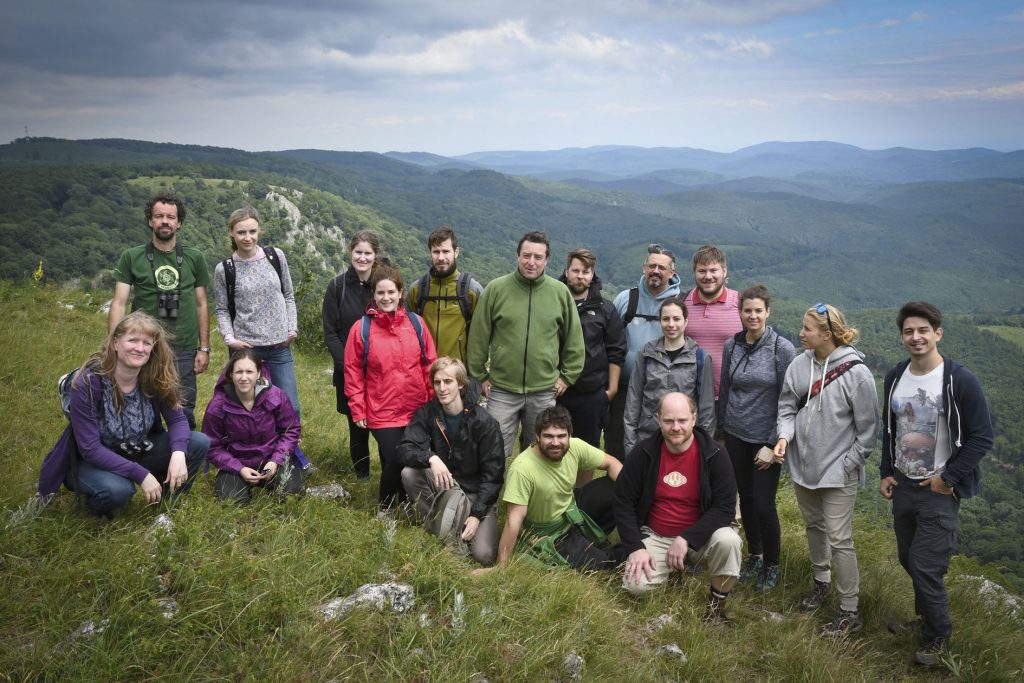
The scientific program of the retreat was again really versatile with 14 exciting scientific lectures covering all the current projects of the team. The traditional „Hyper-active Prize” for the most active participant in the discussions was awarded to Anita Bernal for her useful comments. The „Hyper-attractive Prize” for the best quality presentation was awarded to Beni Barti.
|
|
A new study in collaboration with Prof. Hanns Ulrich Zeilhofer at the University of Zurich has just been published in the Journal of Neuroscience! 22/11/2017 |
|
The paper provides evidence that supraspinal CB1 cannabinoid receptors are essential for the analgesic effect of acetaminophen (aka paracetamol) against inflammatory pain. The use of various cell-type-specific CB1 deficient mouse lines and viral approaches together with microscopical investigations helped to unravel that especially those CB1 receptors, which are located in the rostral ventromedial medulla in the brainstem are among the most important molecular players in acetaminophen analgesia.
|
|
Congratulations to Kata Kenesei on successfully defending her PhD thesis! 09/10/2017 |
|
|
|
Welcome back Vincent! 09/10/2017 |
Vincent Paget-Blanc returns to our laboratory to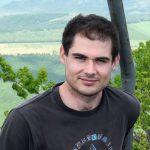 continue experiments with the STORM super-resolution microscopy technique. He comes from Raffaella Tonini’s group at the Istituto Italiano di Tecnologia in Genova and he already spent a month with us in 2016. continue experiments with the STORM super-resolution microscopy technique. He comes from Raffaella Tonini’s group at the Istituto Italiano di Tecnologia in Genova and he already spent a month with us in 2016. |
|
Welcome to Julia Leschik! 10/04/2017 |
 We are pleased to welcome Dr. Julia Leschik who visits our laboratory for a month to perform STORM super-resolution imaging from Prof. Beat Lutz’ laboratory at the Institute of Physiological Chemistry, University Medical Center, Johannes Gutenberg University Mainz. We are pleased to welcome Dr. Julia Leschik who visits our laboratory for a month to perform STORM super-resolution imaging from Prof. Beat Lutz’ laboratory at the Institute of Physiological Chemistry, University Medical Center, Johannes Gutenberg University Mainz. |
|
14th MNB Lab retreat 2017 6-8/04/2017 |
|
This year’s lab retreat took us to the Börzsöny Hills where we hiked to the peak of Csóványos. The weather wasn’t in favour of our program, but we were tough enough to resist the fog and the wind. After the exhausting hiking we had a delicious stew prepared by the world famous chef, Barna Dudok. We also listened to some exciting project reports in the evening before the party session. |
|
Congratulations to Krisztina Kelemen! 01/04/2017 |
Krisztina Kelemen won first prize at the Physiology,  Pathology section of the Scientific Student Competition (TDK) at the University of Medicine and Pharmacy of Târgu Mureș (Marosvásárhelyi Orvosi és Gyógyszerészeti Egyetem). The title of her presentation was: Examination of the calcium binding proteins of the CB1 cannabinoid receptor positive hippocampal interneurons. Pathology section of the Scientific Student Competition (TDK) at the University of Medicine and Pharmacy of Târgu Mureș (Marosvásárhelyi Orvosi és Gyógyszerészeti Egyetem). The title of her presentation was: Examination of the calcium binding proteins of the CB1 cannabinoid receptor positive hippocampal interneurons. |
|
Ana Bernal Chico received a prestigious postdoctoral fellowship! 01/02/2017 |
Congratulations to Ana who received a prestigious postdoctoral fellowship sponsored by the Basque Country. The fellowship will support her research in our lab for two years. postdoctoral fellowship sponsored by the Basque Country. The fellowship will support her research in our lab for two years. |
|
Barna Dudok successfully defended his PhD thesis! 30/01/2017 |
|
Our congratulations to Barna on his 100% successful PhD defense! The title of his doctoral thesis: “Cell type-specific molecular anatomy of the endocannabinoid system at cortical synapses”. Reviewers of the PhD dissertation were Prof. Zoltán Kisvárday from the University of Debrecen, Faculty of Medicine and dr. Judit Lazáry from the Semmelweis University. Barna did his PhD studies at the Semmelweis University János Szentágothai Doctoral School of Neurosciences and his supervisor was István Katona. Barna started working in the |
|
A warm welcome to Claudia Sagheddu! 03/01/2017 |
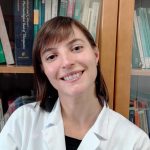
We are pleased to welcome dr. Claudia Sagheddu from the University of Cagliari who is visiting our lab with a Short Term EMBO fellowship. She will stay for 3 months and will learn STORM super-resolution microscopy. |
| The “Space cake” project has just been published in Brain Structure and Function:
A new collaborative paper involving our lab shows an unexpected dissociation between changes in the magnitude of tonic cannabinoid signaling and the number of cannabinoid receptors in a mouse model of “astronaut brain”. 01/12/2016 |
|
Particle radiation causes profound changes in brain physiology, which can lead to depression and declined mental performance in humans, for example after radiotherapy. However, very little is known about the neurobiological basis of these phenomena. In collaboration with the groups of Sanghun Lee, Ivan Soltesz, Charles Limoli and Daniele Piomelli, we http://link.springer.com/article/10.1007/s00429-016-1345-3
|
| A new study from the lab in terms of a fruitful collaboration with the teams of Pablo Castillo and Bryen Jordan at Albert Einstein College of Medicine in New York is just published in Neuron! 19/10/2016 |
| The paper demonstrates that presynaptic protein synthesis is necessary for an endocannabinoid-mediated form of long-term depression. Moreover, the superior detection sensitivity of STORM imaging helped to provide the first direct microscopic evidence -to the best of our knowledge- that eukaryotic ribosomes are present in axon terminals in the adult mammalian brain.
See attached image and the full version. Some further details: It is well established that postsynaptic protein synthesis is critical for the consolidation of long-term synaptic plasticity. However, whether presynaptic local protein translation is involved remained highly debated within the field. In this study, Tommy Younts and Hannah Monday from the Castillo group have done meticulous paired patch-clamp recordings to show that a form of endocannabinoid-dependent long-term depression of inhibitory synapses in the hippocampal CA1 region requires protein synthesis, and can be blocked by the application of translation inhibitors in the presynaptic, but not in the postsynaptic cell. Their experiments also suggested that the site of translation is likely to be in distal axons, and not in the cell body. The presence of ribosomes in mature mammalian axon terminals has been a subject of controversy for decades. STORM super-resolution imaging available in our institute at the Nikon Center of Excellence for Neuronal Imaging offers unprecedented sensitivity in detecting immunofluorescence signal owing to the single-molecule sensitivity of the method. Barna Dudok in our lab has used STORM to demonstrate the presence of presynaptic ribosomes in hippocampal GABAergic axon terminals. Together, these results indicate that precisely regulated local protein synthesis allows the long-lasting modification of the molecular machinery for presynaptic neurotransmitter release at CB1-expressing inhibitory synapses. These findings also raise several exciting questions to be explored. Is presynaptic translation important for other forms of synaptic plasticity and does it play a role at other types of synapses? Furthermore, which mRNAs are specifically translated in axon terminals? To be continued… |
|
Benjámin Barti won first prize with his photo 12/10/2016 |
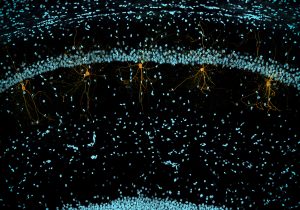 Congratulations to Beni for winning the first prize at the Microtrade Photo Competition’s Micro-world category with his photo. The picture depicts biocytin filled interneurons against a DAPI stained hippocampus. Congratulations to Beni for winning the first prize at the Microtrade Photo Competition’s Micro-world category with his photo. The picture depicts biocytin filled interneurons against a DAPI stained hippocampus. |
|
Barna Dudok in “Everone’s Academy” TV program 04/10/2016 |
| Barna was invited to give an educational lecture in the program Everyone’s Academy of the Hungarian channel M5TV. He introduced the endocannabinoid system and the effect of cannabis on neuronal activity in a colourful and entertaining way to the lay public. |
|
A warm welcome to Susanne Prokop! 01/09/2016 |
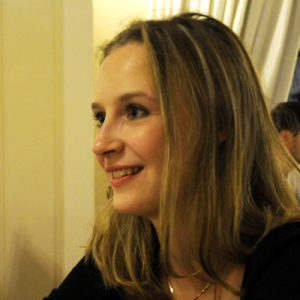 Susanne has graduated in 2016 as a medical doctor at Semmelweis University, and finished the Quantitative Modeling Program at Pazmany Peter University. During her studies, she was working in the laboratory of Professor László Hunyady. Her research was focusing on the dimerization of G Protein Coupled Receptors. She was a visiting researcher at Vanderbilt University in 2014 and in 2015. Susanne has graduated in 2016 as a medical doctor at Semmelweis University, and finished the Quantitative Modeling Program at Pazmany Peter University. During her studies, she was working in the laboratory of Professor László Hunyady. Her research was focusing on the dimerization of G Protein Coupled Receptors. She was a visiting researcher at Vanderbilt University in 2014 and in 2015. |
|
Goodbye to Steve Woodhams! 31/08/2016 |
|
We will all certainly miss him a lot, not only his scientific expertise and helpful advices but also his cheerful and friendly personality and brilliant sense of humour. |
|
Farewell BBQ party to Steve and the first official MNB Lab Button Soccer Championship 26/08/2016 |
|
To teach Steve how to play it – and to have fun – we held the first MNB Lab Button Soccer Championship. Istvan took the role of referee, as he would have had an unfair advantage in the chamionship having played this game A LOT in his childhood. Steve did a really good job in learning the game, as he ended up being the first Button Soccer Champion of the MNB lab. Congratulations, Steve!
|
|
A warm welcome to Ágnes Varga! 01/08/2016 |
|
Ágnes was very enthusiastic and got acquainted with a lot of techniques used in our lab. We wish her good luck with her studies! |
|
13th MNB lab retreat in Tokaj 20/06/2016 |
|
During the lab retreat, we listened to 13 exciting scientific lectures presented by our lab members and by our guests. The traditional „Hyper-active Prize” was shared by all lab members due to their very impressive activity with questions and useful comments after the lectures. The „Hyper-attractive Prize” for the best presentation was awarded to Steve Woodhams for highlighting the similarities between the history of endocannabinoid research and Hungarian football (and also for his beautiful microscopy images). The social program was again colorful as usual: we tasted oustanding wine in the medieval Rákóczi Cellar, in the same chamber where a former Hungarian king was elected; we had a 12 km strenous hike in the beautiful beech forests of the Zemplén Hills near Háromhuta finding several rare plants such as wild Gladiolus and protected animals such as the yellow-bellied toad along the path. On the last day, we had a fantastic canoe trip on the river Bodrog in the strictly protected dense riparian forest and had a very exhausting (especially for those youngsters, who danced until 6 am on the previous night!) crossing across the largest swamps in Hungary with the help of a local biologist. Those who survived the canoe will never forget seeing the white-tailed eagles and the black storks and the refreshing swimming in the Bodrog river appropriately closing the 13th MNB Lab Retreat. If you are interested, you can find more photos about the retreat in the Lablife section. |
|
Barna and Barna in a scientific radio show talking about STORM! 09/06/2016 |
 Our young colleagues, László Barna and Barna Dudok has been interviewed in the “Többet ésszel” scientific program of the Klub Radio. They vividly explained the concept of STORM superresolution microscopy and how exciting the life of a scientist is. Our young colleagues, László Barna and Barna Dudok has been interviewed in the “Többet ésszel” scientific program of the Klub Radio. They vividly explained the concept of STORM superresolution microscopy and how exciting the life of a scientist is. |
| Master’s Thesis Defense of Miklós Zöldi
07/06/2016 |
| Miki defended his Master’s thesis summa cum laude at the Eötvös Loránd University. The title of his thesis: The effect of radiation on endocannabinoid signaling system. Congratulations! |
| Our PI was elected as an EMBO member23/05/2016 |
|
We were delighted to learn today that Congratulations to István and please keep us busy/entertained/motivated with your never-ending suggestions for new scientific challenges. |
|
Congratulations to István Katona! 02/05/2016 |
We are pro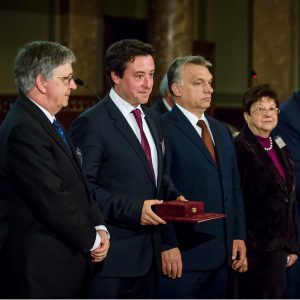 ud to report that István recently received the prestigious Academy Prize for outstanding scientific achievements in 2016, from the Hungarian Academy of Sciences. The award ceremony was held at the 187th meeting of the Hungarian Academy of Sciences and the prize was awarded by László Lovász (President of the Hungarian Academy of Sciences) and Viktor Orbán (Prime Minister of Hungary). Congratulations István! ud to report that István recently received the prestigious Academy Prize for outstanding scientific achievements in 2016, from the Hungarian Academy of Sciences. The award ceremony was held at the 187th meeting of the Hungarian Academy of Sciences and the prize was awarded by László Lovász (President of the Hungarian Academy of Sciences) and Viktor Orbán (Prime Minister of Hungary). Congratulations István! |
| VividSTORM software available for download!
30/01/2016 |
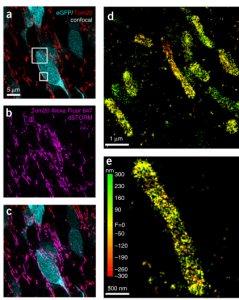 For the anniversary of the publication of our first paper using STORM super-resolution microscopy, now, in collaboration with the IT experts from Pázmány University, we proudly introduce VividSTORM, the first software for the correlated analysis of conventional and superresolution microscopy images. The protocol, detailing sample preparation, imaging, and the application of VividSTORM, has just been published in Nature Protocols, featured on the cover page! For the anniversary of the publication of our first paper using STORM super-resolution microscopy, now, in collaboration with the IT experts from Pázmány University, we proudly introduce VividSTORM, the first software for the correlated analysis of conventional and superresolution microscopy images. The protocol, detailing sample preparation, imaging, and the application of VividSTORM, has just been published in Nature Protocols, featured on the cover page! |
|
A study authored by 50% of the lab published in Nature Neuroscience! 20/01/2015 |
Years after unpacking the new STORM microscope, we finally celebrate the publication of our paper in Nature Neuroscience. In this highly collaborative study – involving 11 members of the lab and the groups of Imre Kacskovics from Immunogenes, ltd., Ivan Soltesz from Irvine, Miriam Melis and Marco Pistis from Cagliari, Masahiko Watanabe from Sapporo, and even a mathematician, Máté Matolcsi from Budapest – we demonstrate the use of STORM super-resolution microscopy to study nanoscale molecular organization on individually labeled and identified neurons.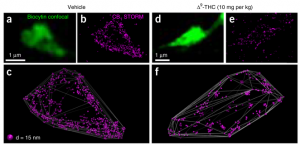 Using this technique, we show the unexpectedly homogeneous distribution of cannabinoid receptors on inhibitory axon terminals, speculate on the consequences of this on endocannabinoid signaling, and provide some shocking images to see what cannabis use does to your GPCRs. Please check out the full paper for details. |
|
New paper published 08/07/2015 |
In our latest paper in The Journal of Neuroscience, with the labs of Ivan Soltesz and George Horvai, we reveal new mechanisms of tonic endocannabinoid signaling. Interestingly, tonic activity of CB1 cannabinoid receptors is determined by constitutive activity, instead of, as we originally expected, continuous activation by endocannabinoids. Moreover, this constitutive receptor activity is restricted to certain interneuron subtypes. To further complicate the picture,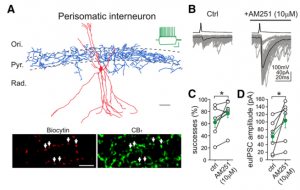 we have observed a crosstalk between the endocannabinoids 2-AG and anandamide, as anandamide decreased 2-AG signaling via postsynaptic vanilloid receptors. we have observed a crosstalk between the endocannabinoids 2-AG and anandamide, as anandamide decreased 2-AG signaling via postsynaptic vanilloid receptors. |
|
Congratulations to Vivien Miczán! 29/06/2015 |
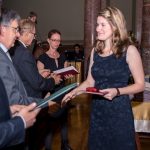 We congratulate Vivi on winning the Pro Scientia Medal of the National Scientific Student Council! We congratulate Vivi on winning the Pro Scientia Medal of the National Scientific Student Council! |
| Our latest study is now accepted for publication26/03/2015 |
Following up on our earlier ventures on the Fragile X territory, we now published a new paper in Frontiers in Cellular Neuroscience. Mutation of the gene encoding FMRP causes Fragile X syndrome, a severe, monogenically inherited mental disability, also linked to autism. 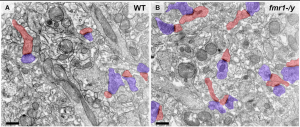 With the group of Olivier Manzoni, we have found that a form of synaptic plasticity is absent in the nucleus accumbens of FMRP knockout mice. Interestingly, dendritic spines of the medium spiny neurons also had substantially altered morphology. The paper is available here. With the group of Olivier Manzoni, we have found that a form of synaptic plasticity is absent in the nucleus accumbens of FMRP knockout mice. Interestingly, dendritic spines of the medium spiny neurons also had substantially altered morphology. The paper is available here. |
|
A new collaborative study published in Neuron 03/05/2014 |
We are pleased to announce that our joint findings with the lab of Sachin Patel about the molecular architecture and function of synaptic endocannabinoid signaling in the central amygdala was published in Neuron last week. 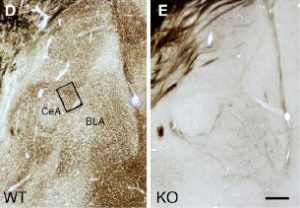 The central amygdala plays a fundamental role in the regulation of stress response and emotional learning. Notably, these two behavioral processes are strongly affected by cannabis use. The underlying neurobiological substrate for the cannabis effects were only partially understood. In addition, it was a long-standing question of how endocannabinoid signaling is involved in these mental processes. Using highly sensitive and specific antibodies against the major endocannabinoid-synthesizing enzyme, DGL-alpha (generated by Ken Mackie) and against CB1 receptors (developed by Masahiko Watanabe), Rita Nyilas in our lab could provide direct anatomical evidence that these key endocannabinoid signaling molecules are present at excitatory glutamatergic synapses in the central amygdala. Because previous CB1 antibodies did not reveal the presence of the receptor in this brain region, this was an unexpected finding, which we validated in CB1 knockout animals (see thumbnail). In accordance, Teniel Ramikie and her colleagues in the Patel lab obtained solid evidence for the existence of several phasic and tonic forms of synaptic plasticity at these synapses, which are mediated by endocannabinoid signaling. An especially intriguing finding of Teniel and Sachin is the strong muscarinic cholinergic regulation of these synaptic signaling processes. These findings pose several important questions of how the cholinergic tone and endocannabinoid signaling, both of which signals about the internal state of the animal, can interact with each other at the behavioral level and how these mechanisms can be therapeutically exploited. |
|
New paper from the MNB Lab 01/02/2014 |
We are really proud to report that a project on the distribution of monoacylglycerol lipase (MGL) in the dorsal horn of the spinal cord could finally be successfully accomplished. The findings are published in the special PAIN issue of the European Journal of Neuroscience. The credit for this work should primarily go to Eszter Horváth and Steve Woodhams, and also to Masahiko Watanabe for kindly providing us a good antibody for MGL. This project has been running for a 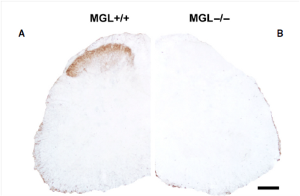 long time in our lab, because it was much more difficult than usually to optimize conditions for a reliable MGL-immunostaining in the spinal cord tissue. Importantly, at the end, we could validate all of our findings in MGL knockout animals (a kind gift of Kenji Sakimura). The importance of this project lies in the very strong antinociceptive effect of MGL inhibition. Despite its potential medical significance, there was no information about the distribution this enzyme in the pain transmission pathway. We found an unexpectedly dense accumulation of MGL in the superficial layers (see thumbnail image), which was due to the concentration of presynaptic MGL in several types of axon terminals in the dorsal horn. We found that the majority of the enzyme is localized in nociceptive afferents, thus, it is in an ideal position to control antinociceptive endocannabinoid signaling at the first central stage of the pain pathways. long time in our lab, because it was much more difficult than usually to optimize conditions for a reliable MGL-immunostaining in the spinal cord tissue. Importantly, at the end, we could validate all of our findings in MGL knockout animals (a kind gift of Kenji Sakimura). The importance of this project lies in the very strong antinociceptive effect of MGL inhibition. Despite its potential medical significance, there was no information about the distribution this enzyme in the pain transmission pathway. We found an unexpectedly dense accumulation of MGL in the superficial layers (see thumbnail image), which was due to the concentration of presynaptic MGL in several types of axon terminals in the dorsal horn. We found that the majority of the enzyme is localized in nociceptive afferents, thus, it is in an ideal position to control antinociceptive endocannabinoid signaling at the first central stage of the pain pathways. |
|
|
 As part of the amazing technological revolution happening in superresolution microscopy, a specialized workshop was organized by the University of Amsterdam to get these innovations closer to life science researchers. Among several leaders of this reseach field, István Katona, our group leader was invited to introduce how STORM microscopy can be used to tackle important questions in neuroscience. He delivered a lecture in which he illustrated how nanoscale molecular imaging of synaptic signaling proteins can easily be accomplished in intact brain tissue. As part of the amazing technological revolution happening in superresolution microscopy, a specialized workshop was organized by the University of Amsterdam to get these innovations closer to life science researchers. Among several leaders of this reseach field, István Katona, our group leader was invited to introduce how STORM microscopy can be used to tackle important questions in neuroscience. He delivered a lecture in which he illustrated how nanoscale molecular imaging of synaptic signaling proteins can easily be accomplished in intact brain tissue. |
| A new baby lab member arrives!26/01/2014 |
| Eszter Horváth has quite prolific weeks. Within just a few days her paper will appear online in the European Journal of Neuroscience. But now we are delighted to report something much more important: she gave birth to her third child, a beautiful girl called Lili Orbán. Warmest congratulations to Eszter and welcome Lili among us! We wish both of you good health, lots of fun to enjoy the milestones of “postnatal maturation” and lots of energy to run the family! |
| Welcome to Marco Ledri!01/01/2014 |
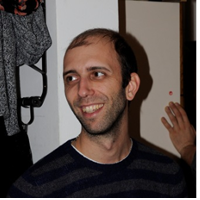 New year, new kid in the block. We are very excited that a very motivated and talented young Italian postdoctoral colleague, Dr. Marco Ledri joins officially our lab from the 1st of January. Marco has received his PhD recently at the University of Lund, Sweden in the lab of Prof. Merab Kokaia. He worked on hippocampal interneurons and their role in epileptic seizures. Please see his forthcoming ground-breaking paper demonstrating of how global stimulation of GABAergic inhibition can silence epileptiform activity, which will appear in The Journal of Neuroscience soon: http://www.jneurosci.org/content/34/9/3364.abstract . In our lab, Marco will work on further development of superresolution microscopy and its combation with patch-clamp electrophysiology. We wish Marco a fruitful time in our lab and also several great personal experiences while living in Budapest. New year, new kid in the block. We are very excited that a very motivated and talented young Italian postdoctoral colleague, Dr. Marco Ledri joins officially our lab from the 1st of January. Marco has received his PhD recently at the University of Lund, Sweden in the lab of Prof. Merab Kokaia. He worked on hippocampal interneurons and their role in epileptic seizures. Please see his forthcoming ground-breaking paper demonstrating of how global stimulation of GABAergic inhibition can silence epileptiform activity, which will appear in The Journal of Neuroscience soon: http://www.jneurosci.org/content/34/9/3364.abstract . In our lab, Marco will work on further development of superresolution microscopy and its combation with patch-clamp electrophysiology. We wish Marco a fruitful time in our lab and also several great personal experiences while living in Budapest. |
|
Merry Christmas and Happy New Year from the MNB LAB! 24/12/2013 |
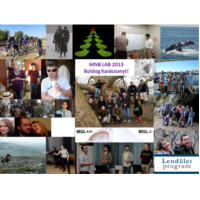 The year of 2013 has been a very busy year for the Molecular Neurobiology lab. Most of our projects, which we began a few years ago, when the lab received the first large supporting grants are close to be mature for publication and hopefully will be available for the public soon (two are accepted, follow our news!). The group leader was invited to present our new findings at 12 international conferences and seminars. Prizes and other achievements of several lab members gave plenty of reasons to celebrate. New people came and sadly good old friends left to pursue carrier elsewhere. We had 4 great lab community events and several funny Friday and Saturday nights together. By this montage, we remember our 2013 and also wish Merry Christmas and Happy 2014 for everyone reading our homepage. The year of 2013 has been a very busy year for the Molecular Neurobiology lab. Most of our projects, which we began a few years ago, when the lab received the first large supporting grants are close to be mature for publication and hopefully will be available for the public soon (two are accepted, follow our news!). The group leader was invited to present our new findings at 12 international conferences and seminars. Prizes and other achievements of several lab members gave plenty of reasons to celebrate. New people came and sadly good old friends left to pursue carrier elsewhere. We had 4 great lab community events and several funny Friday and Saturday nights together. By this montage, we remember our 2013 and also wish Merry Christmas and Happy 2014 for everyone reading our homepage. |
| Christmas party of the MNB LAB08/12/2013 |
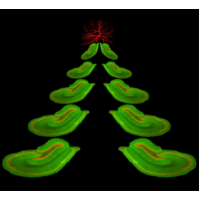 This year, Barna was very kind to host our 8th Christmas lab party. His outstanding beef stew was really high impact and will be highly cited for many years! If we could submit it to “Trends in Cooking”….The lovely cakes prepared by the girls and the seemingly infinite dose of Long Island cocktails mixed by Laci, and with some great music, these sensory inputs also contributed to the fun and we all had a great time. (Maybe the neighbours too, though we are not so sure). Some photos can be found in the LabLife section of the homepage. The thumbnail shows a DGL-alpha immunofluorescence staining of the mouse hippocampus and was created by Anikó, our former lab member. This year, Barna was very kind to host our 8th Christmas lab party. His outstanding beef stew was really high impact and will be highly cited for many years! If we could submit it to “Trends in Cooking”….The lovely cakes prepared by the girls and the seemingly infinite dose of Long Island cocktails mixed by Laci, and with some great music, these sensory inputs also contributed to the fun and we all had a great time. (Maybe the neighbours too, though we are not so sure). Some photos can be found in the LabLife section of the homepage. The thumbnail shows a DGL-alpha immunofluorescence staining of the mouse hippocampus and was created by Anikó, our former lab member. |
|
István Katona becomes elected member of the Academia Europaea 15/10/2013 |
| We are happy and proud to announce that our group leader, István Katona was elected to be the member of the Physiology and Medicine section of the Academia Europea. This honor recognizes his contributions to our understanding of endocannabinoid signaling in the brain. The Academia Europaea, the European Academy of Sciences is a pan-European organization of eminent scholars covering the full range of academic disciplines. We congratulate István for his achievements and wish him several more unexpected discoveries during his scientific carrier. |
| Welcome to Emese Kovács!13/10/2013 |
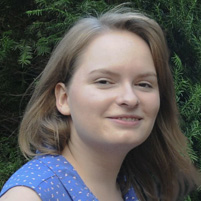 We are very happy to welcome Emese Kovács, a 3rd year undergraduate student at the Semmelweis Medical University in the MNB lab. She will join the neurodevelopmental research program of the lab as a student research assistant. We are very happy to welcome Emese Kovács, a 3rd year undergraduate student at the Semmelweis Medical University in the MNB lab. She will join the neurodevelopmental research program of the lab as a student research assistant. |
|
Autumn bike trip of the MNB LAB 05/10/2013 |
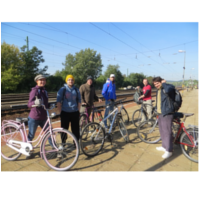 Our yearly autumn bike trip led us to the beautiful Danube Bend north of Budapest. We arrived to Szob by the early morning train and crossed the Ipoly river to start the biking from the border of Hungary and Slovakia. It took us a full day and 83 km to ride back to Budapest. The route followed the Danube river and we passed some lovely villages along the way. Besides the sport component, we enjoyed the tasty National Cake of the Year (with poppy seeds) in a famous cafeteria in the village of Nagymaros, and had some open-air fish lunch in the picturesque city of Vác. Then we crossed the Danube by ferry and biked through the forested Szentendrei Island. After a last energy fill up in the form of an afternoon coffee in Szentendre, the last 20 km biking was already done in the dark. Arriving to the city center exhausted but admiring the great cultural monuments of Budapest all illuminated was an unforgettable experience. Our yearly autumn bike trip led us to the beautiful Danube Bend north of Budapest. We arrived to Szob by the early morning train and crossed the Ipoly river to start the biking from the border of Hungary and Slovakia. It took us a full day and 83 km to ride back to Budapest. The route followed the Danube river and we passed some lovely villages along the way. Besides the sport component, we enjoyed the tasty National Cake of the Year (with poppy seeds) in a famous cafeteria in the village of Nagymaros, and had some open-air fish lunch in the picturesque city of Vác. Then we crossed the Danube by ferry and biked through the forested Szentendrei Island. After a last energy fill up in the form of an afternoon coffee in Szentendre, the last 20 km biking was already done in the dark. Arriving to the city center exhausted but admiring the great cultural monuments of Budapest all illuminated was an unforgettable experience. |
| Welcome to Benjámin Barti!12/09/2013 |
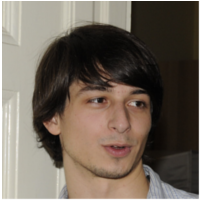 We are very pleased to welcome Mr. Benjámin Barti in the MNB lab. Benjamin is a 4th year Biology MSc student at the Loránd Eötvös University in Budapest. He will study the molecular architecture and plasticity of endocannabinoid signaling in the brain and the spinal cord. We are very pleased to welcome Mr. Benjámin Barti in the MNB lab. Benjamin is a 4th year Biology MSc student at the Loránd Eötvös University in Budapest. He will study the molecular architecture and plasticity of endocannabinoid signaling in the brain and the spinal cord. |
|
Gordon Research Conference on cannabinoid signaling in New England 04-09/08/2013 |
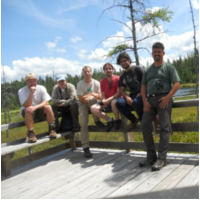 A major scientific event in 2013 for the MNB lab was the Cannabinoid Gordon Conference in the beautiful White Mountains. This meeting is always outstanding due to the wide range of new, unpublished data and new concepts on the endocannabinoid system at the molecular, cellular, systems and behavioral levels. This year, our group leader István Katona was one of the invited speakers and we also presented 5 posters about the recent findings of our lab, all of which received very positve feedbacks from colleagues. As usual, we also had a warm-up hiking trip to overcome jetlag and have a clear brain for the first day of the conference. With the help of the “Steve Soldier Ecotours Company” we saw humpback, minke and fin whales, hummingbirds, black bear, moose. Some photos of this trip and the conference are available in the LabLife section of the homepage. A major scientific event in 2013 for the MNB lab was the Cannabinoid Gordon Conference in the beautiful White Mountains. This meeting is always outstanding due to the wide range of new, unpublished data and new concepts on the endocannabinoid system at the molecular, cellular, systems and behavioral levels. This year, our group leader István Katona was one of the invited speakers and we also presented 5 posters about the recent findings of our lab, all of which received very positve feedbacks from colleagues. As usual, we also had a warm-up hiking trip to overcome jetlag and have a clear brain for the first day of the conference. With the help of the “Steve Soldier Ecotours Company” we saw humpback, minke and fin whales, hummingbirds, black bear, moose. Some photos of this trip and the conference are available in the LabLife section of the homepage. |
| István Katona wins the Momentum Prize of the Hungarian Academy of Sciences01/07/2013 |
 We are delighted to learn – as the Hungarian Academy of Sciences announced today – that our group leader, István Katona is one of the 16 winners of the MOMENTUM research prize, a highly prestigious award for young scientists in Hungary. This research grant offers ~1 million euro support for 5 years with continous excellent scientific activity as a prerequisite. This funding will make it possible to extend our research activity into superresolution microscopy. We aim to advance this method to get better understanding of molecular rearrangements accompanying physiological and pathophysiological plasticity of synaptic endocannabinoid signaling. Update. An interview with István about this award is available here. We are delighted to learn – as the Hungarian Academy of Sciences announced today – that our group leader, István Katona is one of the 16 winners of the MOMENTUM research prize, a highly prestigious award for young scientists in Hungary. This research grant offers ~1 million euro support for 5 years with continous excellent scientific activity as a prerequisite. This funding will make it possible to extend our research activity into superresolution microscopy. We aim to advance this method to get better understanding of molecular rearrangements accompanying physiological and pathophysiological plasticity of synaptic endocannabinoid signaling. Update. An interview with István about this award is available here. |
|
Welcome to Vivien Miczán! 01/07/2013 |
 We are pleased to welcome Miss Vivien Miczán as a student research assistant in our lab. Vivien is a 4th year undergraduate student at the Pázmány Catholic University studying bioinformatics. She will join the superresolution microscopy research program of the lab and will be involved in the generation of computational tools for the analysis of STORM data obtained from hippocampal neurons. We are pleased to welcome Miss Vivien Miczán as a student research assistant in our lab. Vivien is a 4th year undergraduate student at the Pázmány Catholic University studying bioinformatics. She will join the superresolution microscopy research program of the lab and will be involved in the generation of computational tools for the analysis of STORM data obtained from hippocampal neurons. |
| Szilárd Szabó moves to the University of Freiburg, Germany as a postdoctoral researcher
27/06/2013 |
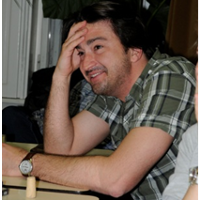 One of our eyes is sad, the other is happy. On one hand, we regret very much that Szilárd Szabó, a very good electrophysiologist postdoctoral researcher has terminated his period in our lab, because he was a really great and helpful colleague. During the last two years, he substantially contributed to our scientific work and social life in many ways. On the other hand, we are very happy that Szilárd can learn new methods and develop his carrier further in Germany and we wish him all the best for his personal and scientific life. One of our eyes is sad, the other is happy. On one hand, we regret very much that Szilárd Szabó, a very good electrophysiologist postdoctoral researcher has terminated his period in our lab, because he was a really great and helpful colleague. During the last two years, he substantially contributed to our scientific work and social life in many ways. On the other hand, we are very happy that Szilárd can learn new methods and develop his carrier further in Germany and we wish him all the best for his personal and scientific life. |
|
Welcome to Daniel Ganszky! 21/05/2013 |
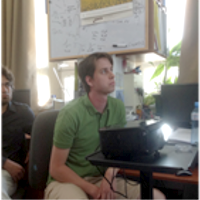 We are happy to welcome Dániel, who studies at Dundee University in Scotland and will spend two months in our lab as a visiting summer student to learn molecular biology techniques. We are happy to welcome Dániel, who studies at Dundee University in Scotland and will spend two months in our lab as a visiting summer student to learn molecular biology techniques. |
|
Many congratulations to Zsófia László! 27/06/2013 |
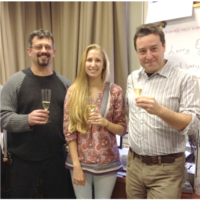 This is really a great year for Zsófi! Despite she is still an undergraduate student, she won the best poster prize at the Hungarian Neuroscience Society conference with her work on the neurodevelopmental function of an endocannabinoid-synthesizing enzyme. With this finding, she also won second prize at the Hungarian Student Reseach Conference as well as obtained her MSc degree with the best possible results. Zsófi deserves all these honors, because she worked very hard for 5 years as an undergraduate student and spent most of her freetime in the lab after the university classes. The training of Zsófi was co-mentored by the deputy group leader Zsolt Lele (left in thumbnail) and our group leader, István Katona (to the right). We are also very happy that Zsófi won a scholarship and continue her work in our lab as a PhD student. We wish her lots of great discoveries during her predoctoral studies! This is really a great year for Zsófi! Despite she is still an undergraduate student, she won the best poster prize at the Hungarian Neuroscience Society conference with her work on the neurodevelopmental function of an endocannabinoid-synthesizing enzyme. With this finding, she also won second prize at the Hungarian Student Reseach Conference as well as obtained her MSc degree with the best possible results. Zsófi deserves all these honors, because she worked very hard for 5 years as an undergraduate student and spent most of her freetime in the lab after the university classes. The training of Zsófi was co-mentored by the deputy group leader Zsolt Lele (left in thumbnail) and our group leader, István Katona (to the right). We are also very happy that Zsófi won a scholarship and continue her work in our lab as a PhD student. We wish her lots of great discoveries during her predoctoral studies! |
|
Spring Lab Retreat of the MNB LAB in Felsőtárkány 05-07/04/2013 |
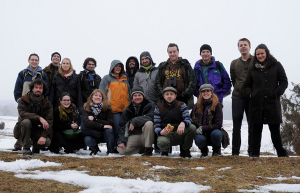 Our annual spring lab retreat took us to the Bükk National Park, a densely forested mountain in Hungary with excellent hiking routes. Spring kicked in late this year, so some quite though hiking in snow on the plateau exhausted the team pretty much. We were very pleased to welcome Prof Uli Zeilhofer and Carolin and William from his team from the University of Zürich, Switzerland. They showed new findings on endocannabinoid signaling in the spinal cord and we also presented 8 unpublished dataset for critical discussion. Besides hiking and science, we had a chance to taste the excellent wines of the St.Andrea winery in the nearby Egerszalók and had some social evening fun in the former comunist pioneer camp in Felsőtárkány. Some photos of the retreat are available in the LabLife section of the homepage. Our annual spring lab retreat took us to the Bükk National Park, a densely forested mountain in Hungary with excellent hiking routes. Spring kicked in late this year, so some quite though hiking in snow on the plateau exhausted the team pretty much. We were very pleased to welcome Prof Uli Zeilhofer and Carolin and William from his team from the University of Zürich, Switzerland. They showed new findings on endocannabinoid signaling in the spinal cord and we also presented 8 unpublished dataset for critical discussion. Besides hiking and science, we had a chance to taste the excellent wines of the St.Andrea winery in the nearby Egerszalók and had some social evening fun in the former comunist pioneer camp in Felsőtárkány. Some photos of the retreat are available in the LabLife section of the homepage. |
| Welcome to Ana Bernal Chico!14/01/2013 |
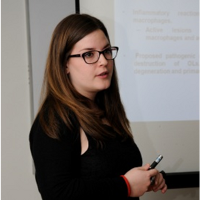 We are happy to welcome Ana Bernal from the Department of Neuroscience in Leioa, Basque Country who will work with us for 3 months to gain experience in neuroanatomical techniques. She visits us in terms of her PhD studies under the mentorship of Dr. Susana Mato. We wish Ana a fruitful time in Budapest and we hope that her work will lead to interesting findings worth to pursue in the future. We are happy to welcome Ana Bernal from the Department of Neuroscience in Leioa, Basque Country who will work with us for 3 months to gain experience in neuroanatomical techniques. She visits us in terms of her PhD studies under the mentorship of Dr. Susana Mato. We wish Ana a fruitful time in Budapest and we hope that her work will lead to interesting findings worth to pursue in the future. |
|
Congratulations to Ashley Dorning! 07/2012 |
| Ashley is an avid Manchester United fan and her expertise in football became clear to all of us in this year’s betting competition for the EuroCup. Ashley correctly predicted the final results of 50% of the group matches and predicted two weeks before the start that Spain will win, Torres will be the top scorer and Ireland receives the highest number of goals. She came first out of the 11 participants. It was great fun to watch several games together in the nearby open-air pub, thanks a lot to Chris for organizing the game! |
|
Three new papers from the MNB Lab have just been accepted! 07/2012 |
| So we ran out of babies (temporarily), but we have received some really good news last week. Three studies involving the work of the MNB Lab were accepted in Nature Communications, The Journal of Neuroscience and in Journal of Physiology-London. More details are coming soon! Till then just check out the abstracts at the forthcoming FENS Forum in Barcelona. |
|
A new review on endocannabinoid signaling in Annual Review of Neuroscience! 21/07/2012 |
 We are pleased to report that the prestigious Annual Review of Neuroscience gave us the honour of writing a review in which we summarize new concepts and unresolved issues in endocannabinoid signaling. The central concept of the review is that retrograde endocannabinoid signaling is as basic an element of synaptic communication as conventional amino acid-based anterograde signaling. We offer several pieces of evidence supporting the notion that the same biological principles govern retrograde and anterograde synaptic signaling and highlight some of the most important burning questions for the field. We are pleased to report that the prestigious Annual Review of Neuroscience gave us the honour of writing a review in which we summarize new concepts and unresolved issues in endocannabinoid signaling. The central concept of the review is that retrograde endocannabinoid signaling is as basic an element of synaptic communication as conventional amino acid-based anterograde signaling. We offer several pieces of evidence supporting the notion that the same biological principles govern retrograde and anterograde synaptic signaling and highlight some of the most important burning questions for the field. |
|
Congratulations to Balázs Pintér! 06/2012 |
| So, it is probably the time to recruit a nanny for the MNB lab! We were delighted to learn that the third girl and the fourth baby altogether for 2012 just arrived. Now the proud father is Balázs, and his cute little daughter is called Kata Virág Pintér. Mummy and Kata are healthy and happy, Daddy looks a little bit sleepy these days in the lab, just like his daughter! We wish the whole family a wonderful life together! |
|
One baby one paper! 18/06/2012 |
| So we keep the roll going! We were delighted to learn that a brand new study including the work of our lab member László Barna was just accepted in PLOS ONE. Laci used super-resolution microscopy to help the team of Balázs Gereben reveal that the active center of the type 3 deiodinase D3 enzyme is located on the outer surface of dense core vesicles in the axon of neurosecretory neurons. Kalló I, Mohácsik P, Vida B, Zeöld A, Bardóczi Z, Zavacki AM, Farkas E, Kádár A, Hrabovszky E, Arrojo E Drigo R, Dong L, Barna L, Palkovits M, Borsay BA, Herczeg L, Lechan RM, Bianco AC, Liposits Z, Fekete C, Gereben B (2012) A novel pathway regulates thyroid hormone availability in rat and human hypothalamic neurosecretory neurons. PLoS One. 7:e37860. PubMed link: http://www.ncbi.nlm.nih.gov/pubmed/22719854 |
|
Congratulations to Eszter Szabadits! 05/2012 |
| Happy baby shower! We were happy to learn that Eszter gave birth to the third MNB Lab baby this year, she is called Luca Emese Cserép! Luca was a little bit impatient to see the outside world, but her biometric parameters are very good 2560 g and 49 cm. We wish Luca, Eszter and the whole family all the best! |
|
A new study from the MNB lab published in JCN! 01/05/2012 |
| Today, Journal of Comparative Neurology has published the study of our lab member Zsolt Lele describing the developmental and adult distribution of all type II cadherins in the hippocampus and the cortex. This work is the first detailed characterization of these crucial cadherins in cortical regions and it will serve as an important reference for those who study neuronal adhesion in cortical circuits. Lefkovics K, Mayer M, Bercsényi K, Szabó G and Lele Z (2012) Comparative analysis of type II classic cadherin mRNA distribution patterns in the developing and adult mouse somatosensory cortex and hippocampus suggests significant functional redundancy. Journal of Comparative Neurology 520:1387-1405. PubMed link: http://www.ncbi.nlm.nih.gov/pubmed/22102170 |
|
Congratulations to Zsolt Lele! 04/2012 |
| It seems that our lab will have a prolific year in terms of both babies and scientific papers. Zsolt had to leave our lab retreat early and the next day his spouse delivered a beautiful little boy called Levente! Everyone is happy and relaxed now, and we wish Levente and the whole family a very peaceful childhood together! |
|
New equipment grant for super-resolution microscopy won by the PI of the MNB lab! 23/04/2012 |
| Prof. József Pálinkás, the President of the Hungarian Academy of Sciences officially announced today that our grant application was successful and we will receive the support to purchase a super-resolution microscope based on the STORM approach as well as an electron microscope with tomography. The grant amounts to 258 million HUF (860 000 Euro). The proposed project “Nanoscale architecture of the brain” will be accomplished in terms of the NANOBRAIN consortium which consists of a selected group of IEM HAS researchers led by István Katona, the PI of the MNB lab. Our efforts are integrated into our current international grants, because these new microscopes will greatly facilitate our experimental repertoire and open the possibility to study signaling pathways at the nanoscale level. |
| 2nd Spring MNB Lab Conference and Retreat in Tihany13-15/04/2012 |
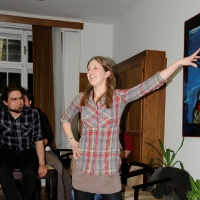 This year we spent a long weekend together to share our preliminary scientific findings and help each other with creative ideas. The ideal atmosphere and the beautiful location of the Limnology Research Center of the Hungarian Academy of Sciences right by the shore of Lake Balaton helped us to organize a fascinating meeting. We listened to 14 lectures over two days and had long discussions about the technical and biological aspects of our experiments. But we also allowed time to enjoy other types of fun together. During the first evening we visited the cellar of one of the top Hungarian wine makers located in nearby Balatonfüred (Figula Winery) and enjoyed an excellent wine tasting. Next day we had a short excursion to the World Heritage fishing village of Tihany and enjoyed some beautiful panoramas of springtime Balaton. During the final evening, prizes were given to the best speakers and to the most active participants. We finished the retreat with a huge pizza dinner and some really crazy X-BOX competitions. Look for the funny pictures in our LabLife section! This year we spent a long weekend together to share our preliminary scientific findings and help each other with creative ideas. The ideal atmosphere and the beautiful location of the Limnology Research Center of the Hungarian Academy of Sciences right by the shore of Lake Balaton helped us to organize a fascinating meeting. We listened to 14 lectures over two days and had long discussions about the technical and biological aspects of our experiments. But we also allowed time to enjoy other types of fun together. During the first evening we visited the cellar of one of the top Hungarian wine makers located in nearby Balatonfüred (Figula Winery) and enjoyed an excellent wine tasting. Next day we had a short excursion to the World Heritage fishing village of Tihany and enjoyed some beautiful panoramas of springtime Balaton. During the final evening, prizes were given to the best speakers and to the most active participants. We finished the retreat with a huge pizza dinner and some really crazy X-BOX competitions. Look for the funny pictures in our LabLife section! |
|
Welcome to Steve Woodhams! 06/04/2012 |
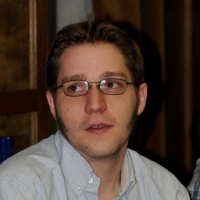 We are pleased to welcome Dr. Steve Woodhams as our latest lab member. Steve received his PhD from the University of Nottingham in the outstanding pain research group of Prof. Victoria Chapman, where he studied the role of endocannabinoid signaling in chronic pain. We hope Steve can develop and learn a lot while working with us and we wish him good luck in his upcoming projects. We are pleased to welcome Dr. Steve Woodhams as our latest lab member. Steve received his PhD from the University of Nottingham in the outstanding pain research group of Prof. Victoria Chapman, where he studied the role of endocannabinoid signaling in chronic pain. We hope Steve can develop and learn a lot while working with us and we wish him good luck in his upcoming projects. |
|
Another paper from the MNB lab! 03/2012 |
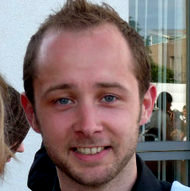 Our EMBO Fellow Chris Henstridge has recently received an invitation from Pharmacology to write another review about the effect of cannabinoids on non-conventional cannabinoid receptors including GPR55. Our EMBO Fellow Chris Henstridge has recently received an invitation from Pharmacology to write another review about the effect of cannabinoids on non-conventional cannabinoid receptors including GPR55. |
|
The MNB Lab in Southern California, Irvine 02/2012 |
| Three lab members were fortunate enough to escape the harsh European winter by partaking in an on-going collaboration with the group of Prof. Ivan Soltesz in the Department of Neurobiology and Anatomy, University of California, Irvine. The aim of our joint project with the Soltesz lab is to correlate endocannabinoid-dependent physiological parameters of synaptic activity with quantitative cell type-specific molecular profiling. We are using a combination of paired whole-cell patch-clamp recording with the STORM super-resolution approach to achieve this aim. The experiments were more than promising, so we are planning to continue to work together (and hope to get another chance to enjoy sunny Southern California). We also have a new team name  : The STORMTROOPERS (if you don’t know what a stormtrooper is, you can look it up at Wookieepedia: http://starwars.wikia.com/wiki/Stormtrooper). Prof. Soltesz is on the left, a postdoc candidate just before his/her job talk is on the right. More images are found in our Lablife section. : The STORMTROOPERS (if you don’t know what a stormtrooper is, you can look it up at Wookieepedia: http://starwars.wikia.com/wiki/Stormtrooper). Prof. Soltesz is on the left, a postdoc candidate just before his/her job talk is on the right. More images are found in our Lablife section. |
|
Aniko Ludanyi moves to University College London as a postdoctoral researcher 06/02/2012 |
| Aniko has worked with us for more than 7 years and has greatly contributed to the MNB lab both scientifically and personally. Therefore, in a way, it is a sad moment for us that she leaves for London. On the other hand, we are fully aware that it is very important for Anikó’s scientific carrier to learn new methods and concepts in other laboratories during her postdoctoral stage. We are very proud that she was accepted into the world class laboratory of Prof. Antonella Riccio in the MRC Laboratory for Molecular Cell Biology at UCL, UK. We wish Anikó all the best and hope that she will make some great discoveries there! |
|
Congratulations to Rita Nyilas! 31/01/2012 |
| We were delighted to learn that Zsófia Varga, the first daughter of Rita Nyilas was born last night. Both the baby and Rita are healthy and happy. Her biometric parameters are 3 kg and 48 cm. As you can see below, Zsofi’s curiosity already captures the exciting external world and she listens to her mummy as every good kid should! We wish the whole family a healthy and long happy life together! |
|
Welcome to Ashley Dorning! 10/01/2012 |
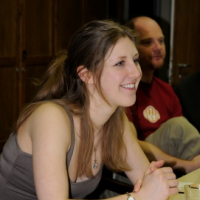 Ashley is currently a PhD student at the University of Aberdeen, UK. She has recently joined us to learn new methods and finish some experiments for her PhD. We wish Ashley a nice time with us and hope that she will profit a lot from her work in our lab. Ashley is currently a PhD student at the University of Aberdeen, UK. She has recently joined us to learn new methods and finish some experiments for her PhD. We wish Ashley a nice time with us and hope that she will profit a lot from her work in our lab. |
|
Christmas Party in the MNB Lab 18/12/2011 |
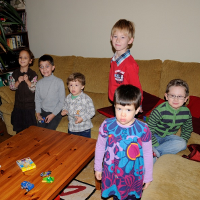 Again this year we had a lovely Christmas party, thanks to the hospitality of Jutka and Zsolt, who created a wonderful atmosphere in their house. Lots of Hungarian winter food like goulash and stew, as well as nice cakes including our favourite pancakes added to the flavour of a Hungarian Christmas for our foreign colleagues before they travel home to celebrate with their families. A new colour in the life of the lab was the involvement of numerous little creatures belonging to our F1 generation (our kids, for those who don’t work with transgenic animals). They kept us busy with many games and entertained us with children songs throughout the evening. So after the so many photos about the lab members, here is a group photo of all the kids of the MNB lab. More photos are also presented in our Lablife section. Again this year we had a lovely Christmas party, thanks to the hospitality of Jutka and Zsolt, who created a wonderful atmosphere in their house. Lots of Hungarian winter food like goulash and stew, as well as nice cakes including our favourite pancakes added to the flavour of a Hungarian Christmas for our foreign colleagues before they travel home to celebrate with their families. A new colour in the life of the lab was the involvement of numerous little creatures belonging to our F1 generation (our kids, for those who don’t work with transgenic animals). They kept us busy with many games and entertained us with children songs throughout the evening. So after the so many photos about the lab members, here is a group photo of all the kids of the MNB lab. More photos are also presented in our Lablife section. |
|
Hungarian Television broadcasting from the MNB Lab 06/12/2011 |
| The Hungarian National Public Service Television Company (equivalent of the BBC and abbreviated as MTV or m1) recorded a 30 minute-long documentary about the life and work of the Laboratory of Molecular Neurobiology. It was a very funny day, we tried our best to behave as a mixture of serious scientists and Hollywood stars. The MTV crew did a really good job and illustrated the concepts of endocannabinoid signaling and the methods we use very well. The final documentary is found in the repository of MTV (not the one you would first think of) at the following link: http://videotar.mtv.hu/Videok/2011/12/06/15/Almok_mai_almodoi__Kalandozas_az_idegsejetek_kozott.aspx One needs Windows Media Player to watch the film. You can find additional images in our Lablife section. |
| Welcome to Szilard Szabo!4/12/2011 |
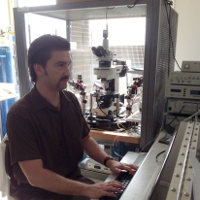 We are really pleased that Dr. Szilárd Szabó will join the MNB lab as a postdoctoral researcher. Szilárd has got a strong background in neurophysiology, especially regarding hippocampal interneurons and has solid experience with two-photon fluorescence calcium imaging and patch-clamp electrophysiology. We look forward to a fruitful collaboration with Szilárd and we hope that he can develop further both conceptually and technically in our team. We are really pleased that Dr. Szilárd Szabó will join the MNB lab as a postdoctoral researcher. Szilárd has got a strong background in neurophysiology, especially regarding hippocampal interneurons and has solid experience with two-photon fluorescence calcium imaging and patch-clamp electrophysiology. We look forward to a fruitful collaboration with Szilárd and we hope that he can develop further both conceptually and technically in our team. |
|
A new paper from the MNB lab! 11/2011 |
| We are happy to report that EMBO Fellow Chris Henstridge has just had an invited review published in Molecular Endocrinology. This review summarizes new information on GPR55, an interesting but as yet orphan GPCR, which in some paradigms can be activated by distinct cannabinoid ligands. Henstridge CM, Balenga NA, Kargl J, Andradas C, Brown AJ, Irving A, Sanchez C, Waldhoer M (2011) Minireview: recent developments in the physiology and pathology of the lysophosphatidylinositol-sensitive receptor GPR55. Molecular Endocrinology 25:1835-48. PubMed link: http://www.ncbi.nlm.nih.gov/pubmed/21964594 |
|
Annual MNB Lab autumn biking trip 9/10/2011 |
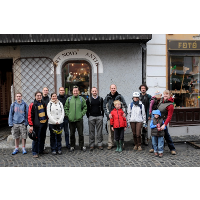 Our annual biking trip along the beautiful Danube-bend region was a great success and again great fun. Despite the rain in the morning, and some appealing public places serving cakes or beer, we finally managed to fulfil our bikeroute from the picturesque town of Szentendre through the countryside of the main island of the Danube, the Szentendrei-island, finally arriving the historic town of Vác. We had special guests this year, some family members and Steve Woodhams, a promising postdoctoral candidate from the University of Nottingham, UK (first from the left). Steve not only gave an excellent job talk the next day, but enjoyed our delicious national food “Szittya-pitta”, and was the only one who could finish the tour in shorts in the rain! Our annual biking trip along the beautiful Danube-bend region was a great success and again great fun. Despite the rain in the morning, and some appealing public places serving cakes or beer, we finally managed to fulfil our bikeroute from the picturesque town of Szentendre through the countryside of the main island of the Danube, the Szentendrei-island, finally arriving the historic town of Vác. We had special guests this year, some family members and Steve Woodhams, a promising postdoctoral candidate from the University of Nottingham, UK (first from the left). Steve not only gave an excellent job talk the next day, but enjoyed our delicious national food “Szittya-pitta”, and was the only one who could finish the tour in shorts in the rain! |
|
MNB Lab at the FENS Featured Regional Meeting in Ljubljana 22-25/09/2011 |
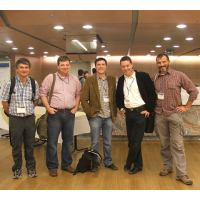 The PI of the MNB lab has received a prestigious invitation to organize a symposium about endocannabinoid signaling at the FENS Featured Regional Meeting called SiNAPSA in Ljubljana, Slovenia. The conference was very interesting with several excellent symposia and plenary lectures. We also heard very positive feedbacks about the endocannabinoid symposium (see summary below the photos). The symposium participants included Prof. Giovanni Marsicano (first from the right), Prof. István Katona (second from the right), Prof. Thomas Nevian (third from the right) and Prof. Attila Losonczy (fourth from the right). Our friend, Prof. József Csicsvári (first from the left), gave a talk in another symposium, and joined us for vivid discussions. Moreover, Prof. Losonczy tried a potential new job opportunity at the petrol station along the highway, just in case his new professorship at Columbia University in New York would turn out to be too boring for his ever-excited brain. The PI of the MNB lab has received a prestigious invitation to organize a symposium about endocannabinoid signaling at the FENS Featured Regional Meeting called SiNAPSA in Ljubljana, Slovenia. The conference was very interesting with several excellent symposia and plenary lectures. We also heard very positive feedbacks about the endocannabinoid symposium (see summary below the photos). The symposium participants included Prof. Giovanni Marsicano (first from the right), Prof. István Katona (second from the right), Prof. Thomas Nevian (third from the right) and Prof. Attila Losonczy (fourth from the right). Our friend, Prof. József Csicsvári (first from the left), gave a talk in another symposium, and joined us for vivid discussions. Moreover, Prof. Losonczy tried a potential new job opportunity at the petrol station along the highway, just in case his new professorship at Columbia University in New York would turn out to be too boring for his ever-excited brain. |
| Welcome to Eszter Szabadits!01/09/2011 |
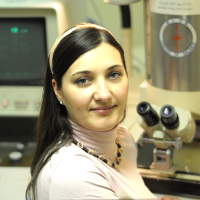 Because we are very satisfied with all the current Eszters in the lab, we are delighted to learn that a FOURTH, Dr. Eszter Szabadits will join our group from the 1st of September as a postdoctoral researcher. Eszter carried out her PhD studies under the supervision of Dr. Gábor Nyíri in the Laboratory of Cerebral Cortex Research led by Prof. Tamas F. Freund. She has the reputation as one of the most promising young neuroscientists in our institute, and we are all really looking forward to working with her. Because we are very satisfied with all the current Eszters in the lab, we are delighted to learn that a FOURTH, Dr. Eszter Szabadits will join our group from the 1st of September as a postdoctoral researcher. Eszter carried out her PhD studies under the supervision of Dr. Gábor Nyíri in the Laboratory of Cerebral Cortex Research led by Prof. Tamas F. Freund. She has the reputation as one of the most promising young neuroscientists in our institute, and we are all really looking forward to working with her. |
|
Welcome to Eszter Székely! 01/08/2011 |
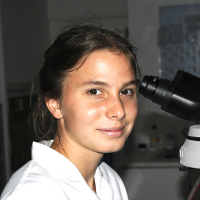 Eszter joined the Katona lab with support from the Hungarian National Talent Support mentoring program in July. She is a young, talented and motivated 11th grade student studying mathematics in the prestigious Mihály Fazekas High School in Budapest. Eszter is in a “critical period” in which we hope she will be captured by the current burning questions in Neuroscience and the everyday adventures of a life in science. We hope Eszter will find her experience with us exciting and consider Neuroscience as a way of life in the future. Eszter joined the Katona lab with support from the Hungarian National Talent Support mentoring program in July. She is a young, talented and motivated 11th grade student studying mathematics in the prestigious Mihály Fazekas High School in Budapest. Eszter is in a “critical period” in which we hope she will be captured by the current burning questions in Neuroscience and the everyday adventures of a life in science. We hope Eszter will find her experience with us exciting and consider Neuroscience as a way of life in the future. |
|
Chris Henstridge delivers lecture at the British Neuroscience Association Meeting 17-20/04/2011 |
 Chris, our EMBO postdoc-fellow from the UK, was an invited speaker at the recent British Neuroscience Association meeting in Harrogate. Chris, our EMBO postdoc-fellow from the UK, was an invited speaker at the recent British Neuroscience Association meeting in Harrogate. |
|
PhD defense of Anikó Ludányi 05/04/2011 |
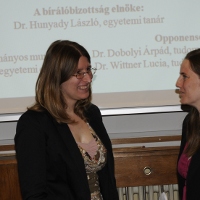 Anikó defended her PhD thesis summa cum laude. The title of her thesis: Neurobiological characterization of the endocannabinoid signaling in postmortem and epileptic human hippocampus. Congratulations! Anikó defended her PhD thesis summa cum laude. The title of her thesis: Neurobiological characterization of the endocannabinoid signaling in postmortem and epileptic human hippocampus. Congratulations! |
|
1st Spring MNB Lab Conference and Retreat at Mátraháza 2-3/04/2011 |
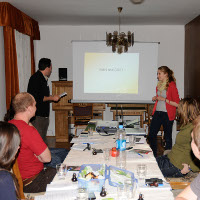 The Mátra Hills proved to be an ideal setting for the retreat, allowing us the possibility to refresh ourselves with a short excursion between lectures. The Hungarian Academy of Sciences conference centre at Mátraháza provided all the technical facility we needed, as well as excellent food. Based on the success of the first scientific retreat of our lab, we intend to organize it annually in the future. The Mátra Hills proved to be an ideal setting for the retreat, allowing us the possibility to refresh ourselves with a short excursion between lectures. The Hungarian Academy of Sciences conference centre at Mátraháza provided all the technical facility we needed, as well as excellent food. Based on the success of the first scientific retreat of our lab, we intend to organize it annually in the future. |
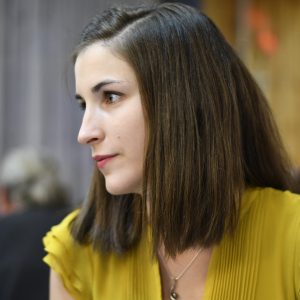
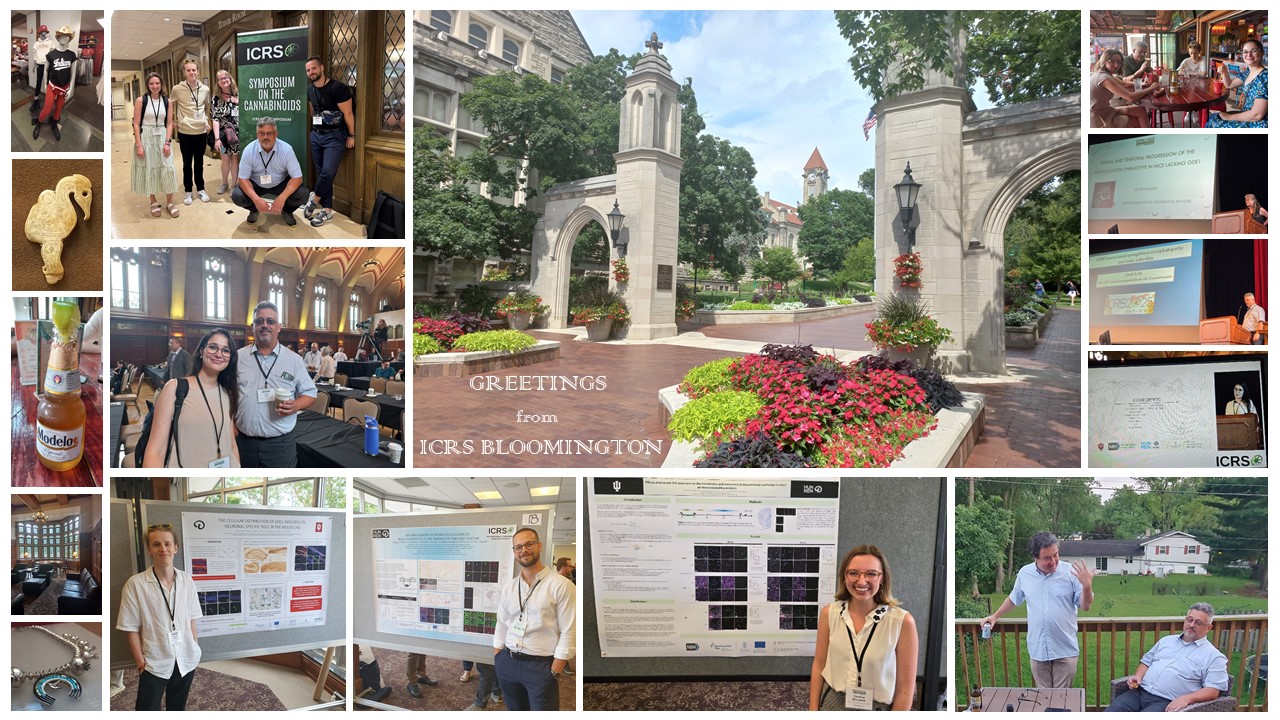
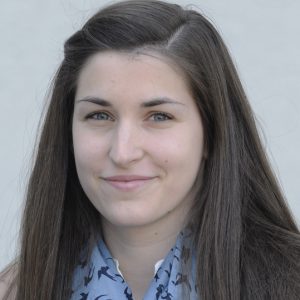
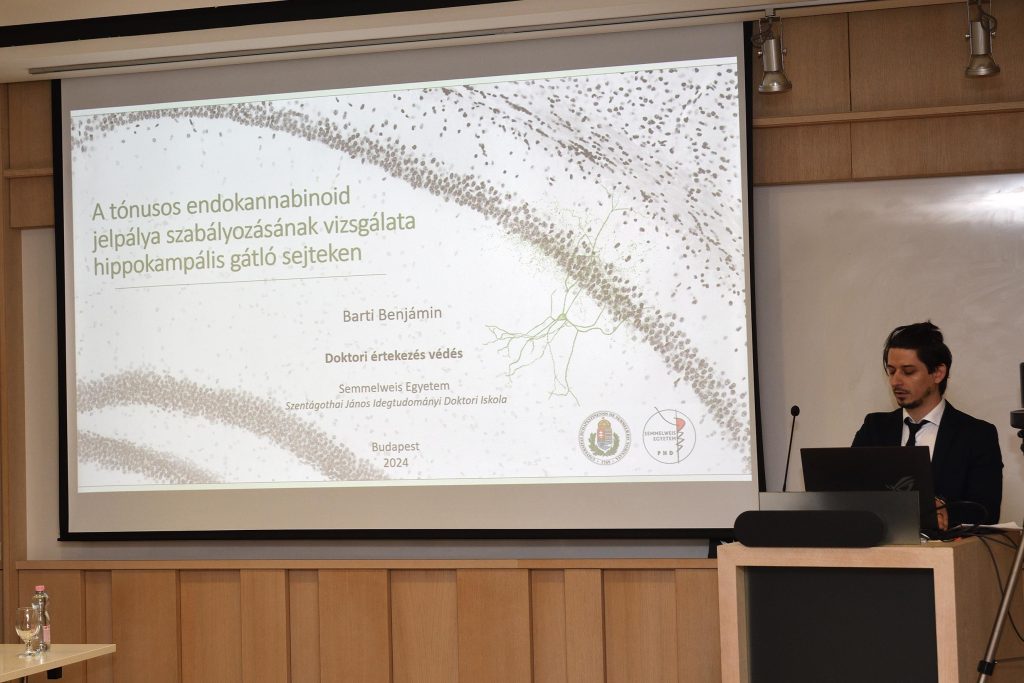
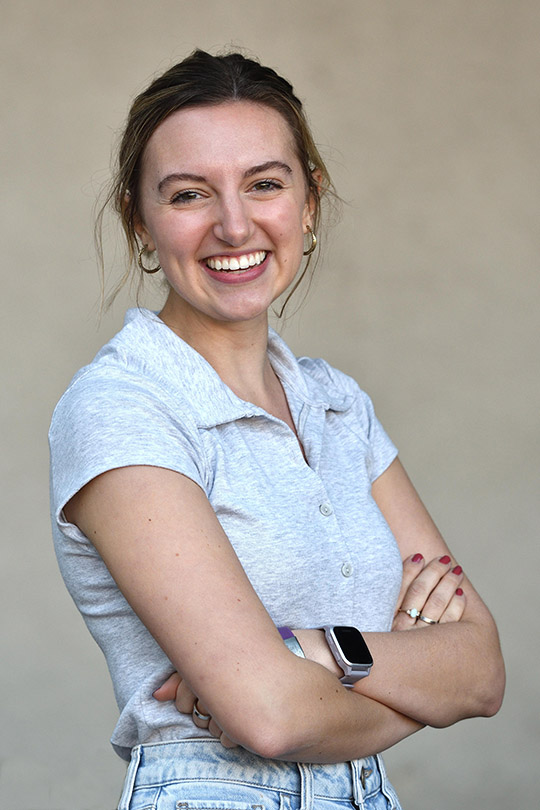
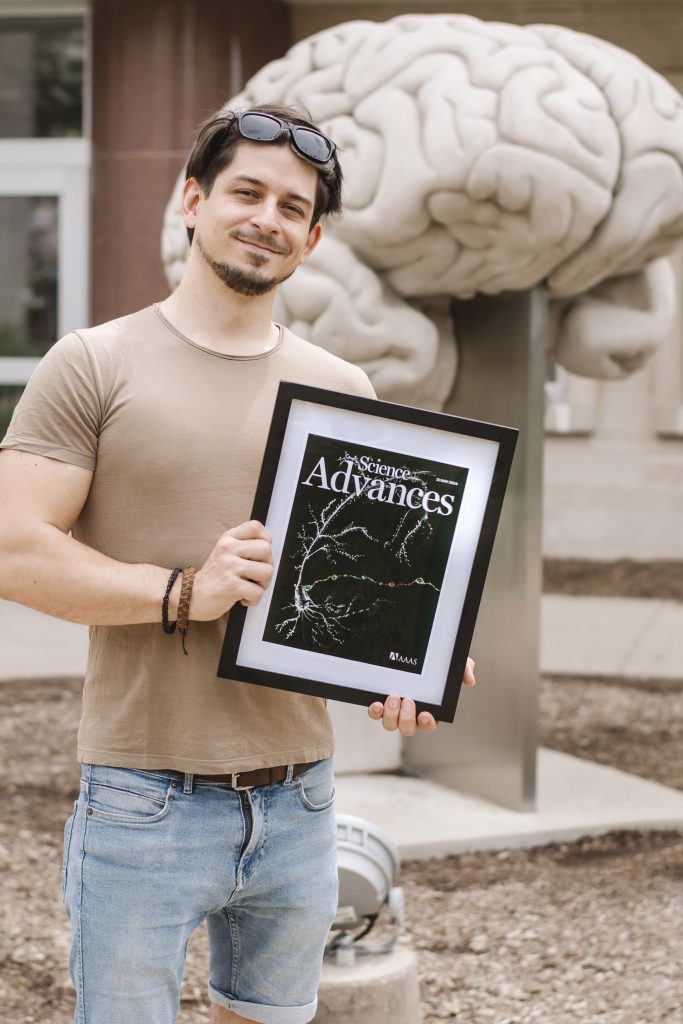

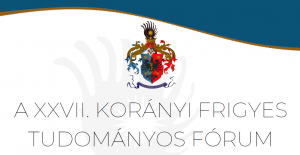
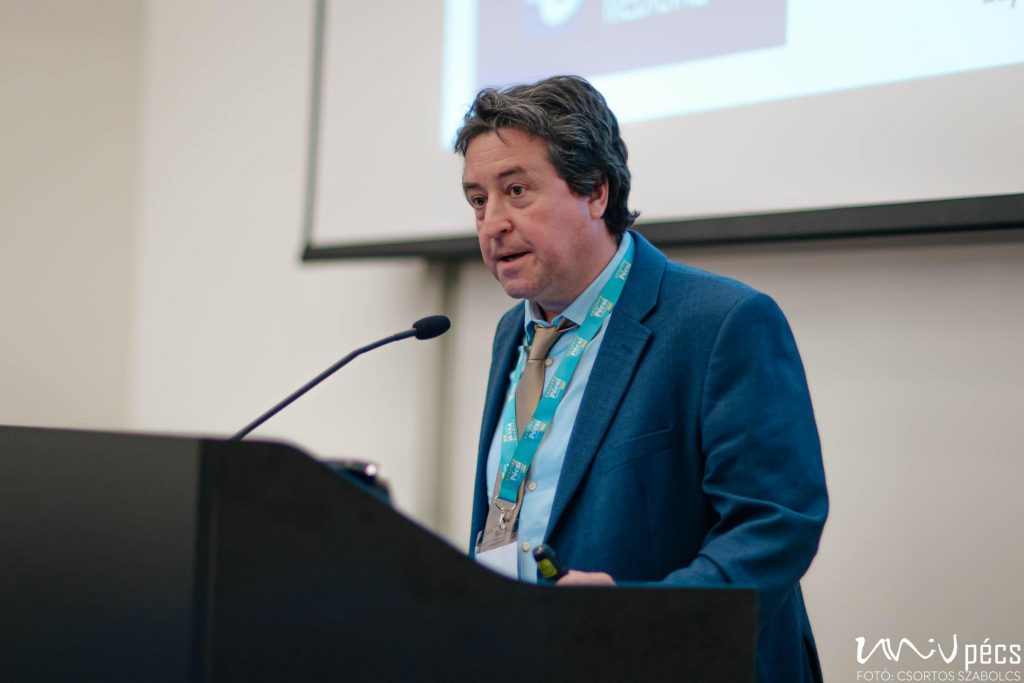
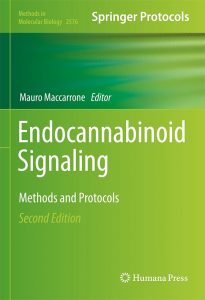
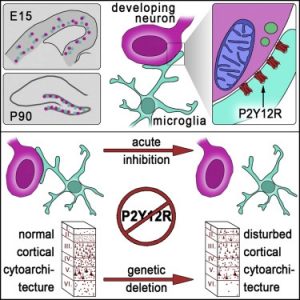
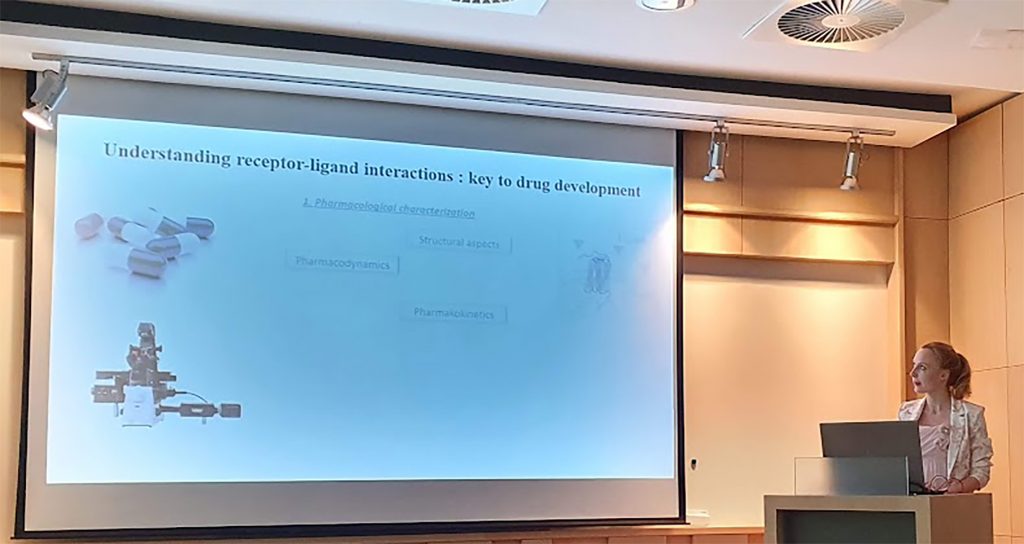

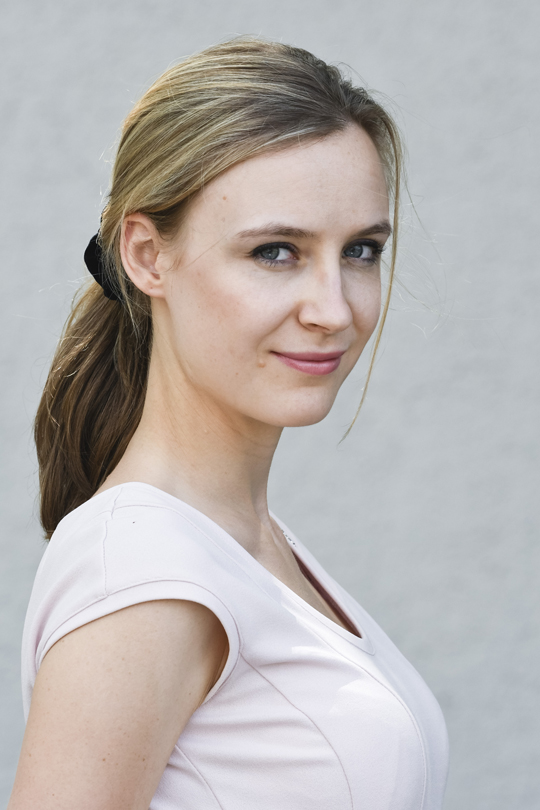 e PhD students who published first author paper in prestigious journals during the year. Susanne received this recognition for her work published in Nature Communications introducing the novel PharmacoSTORM method and showing the cariprazine binding on D3 dopamine receptors located on the axons of the Islands of Calleja granule cells.
e PhD students who published first author paper in prestigious journals during the year. Susanne received this recognition for her work published in Nature Communications introducing the novel PharmacoSTORM method and showing the cariprazine binding on D3 dopamine receptors located on the axons of the Islands of Calleja granule cells.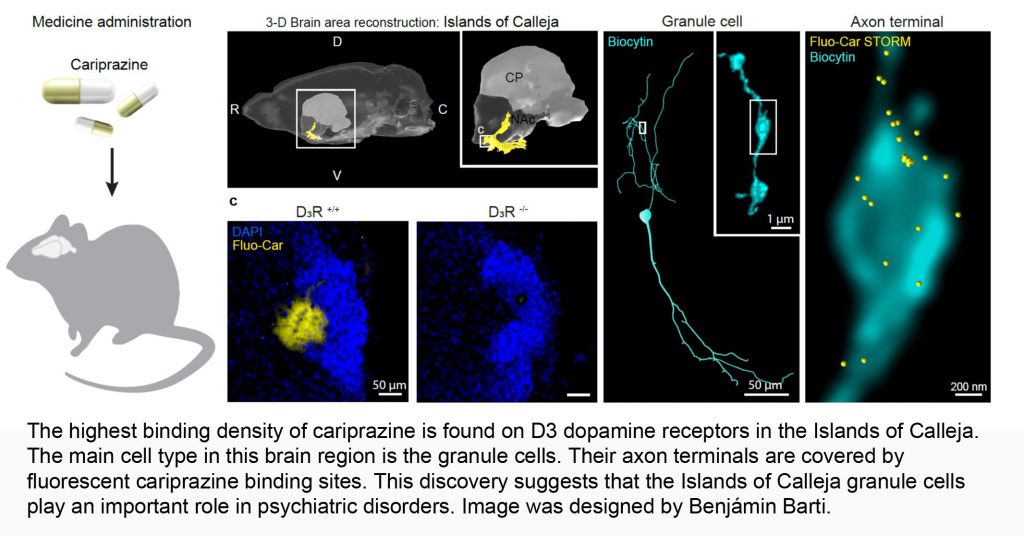


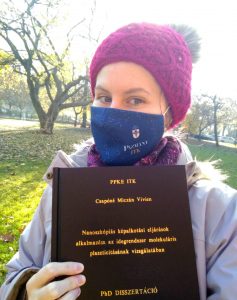
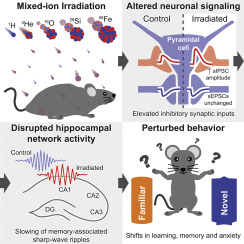
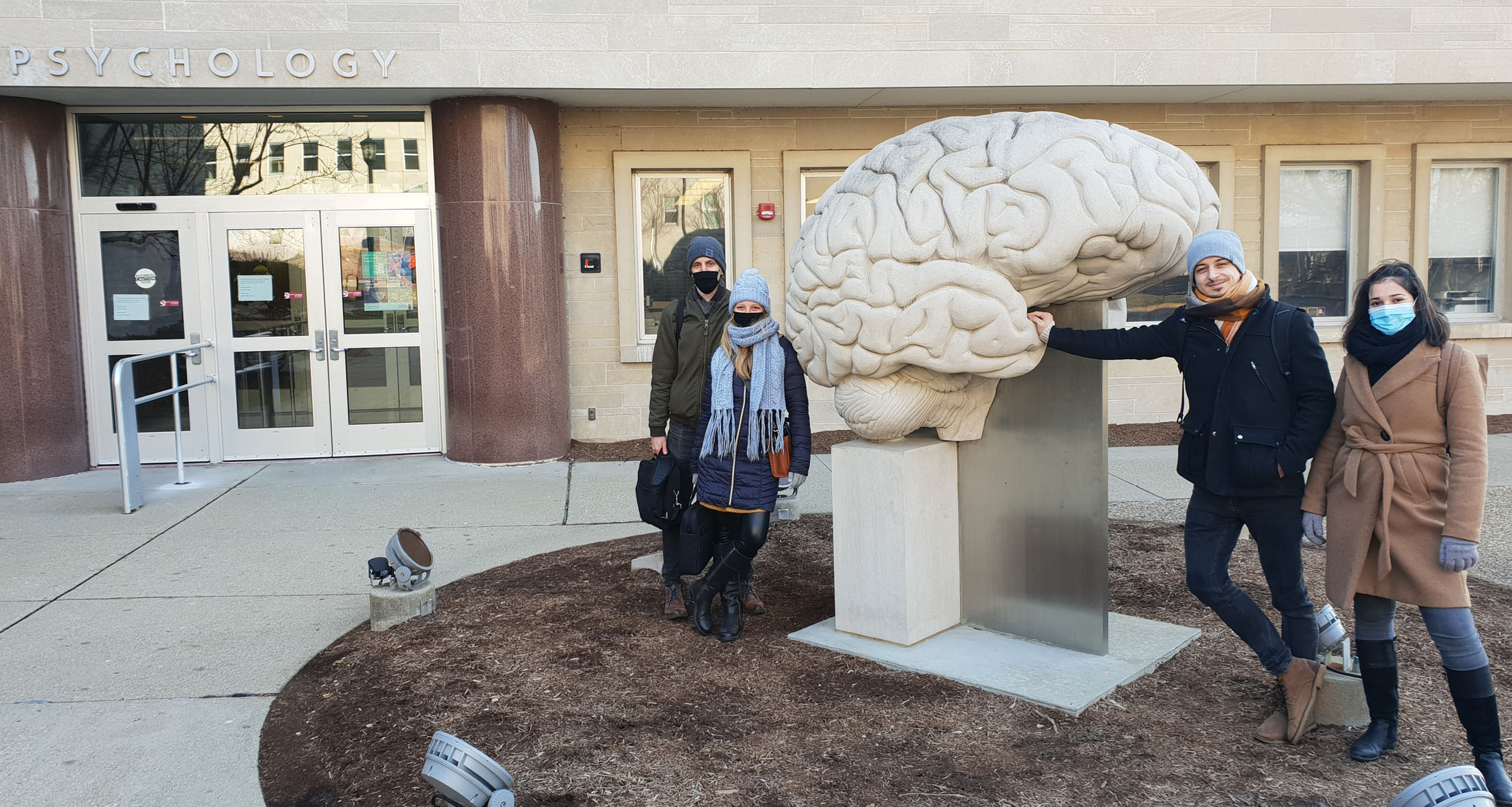
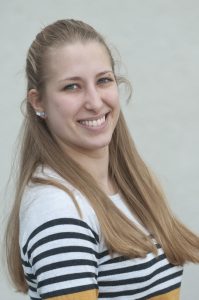
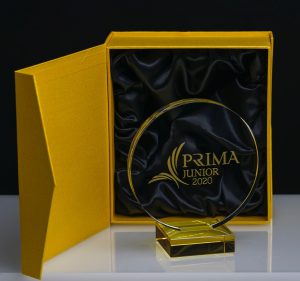


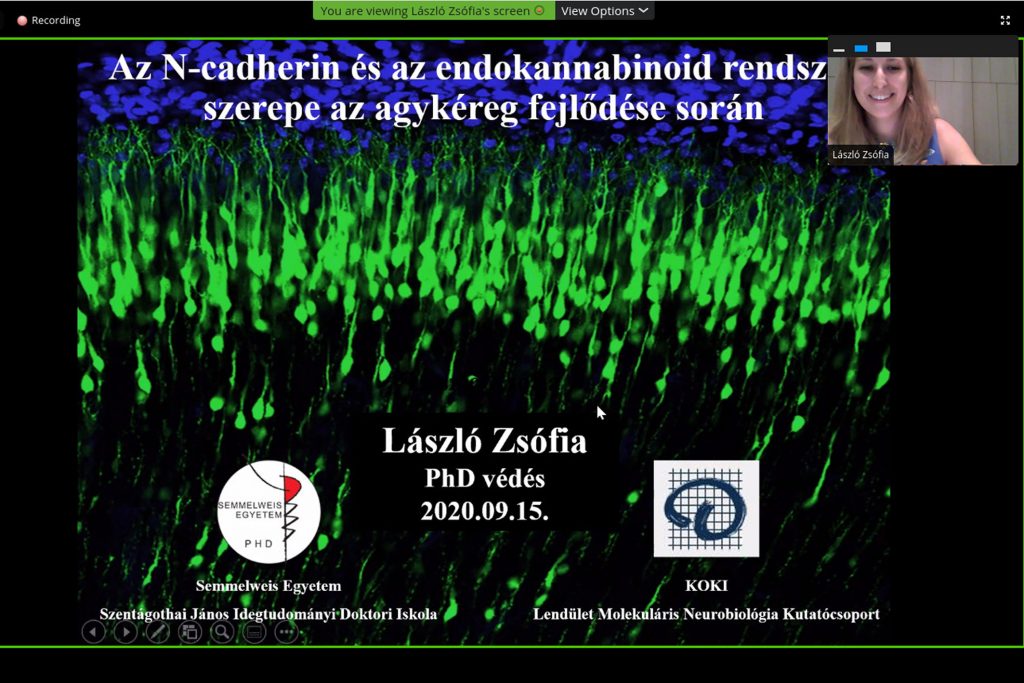
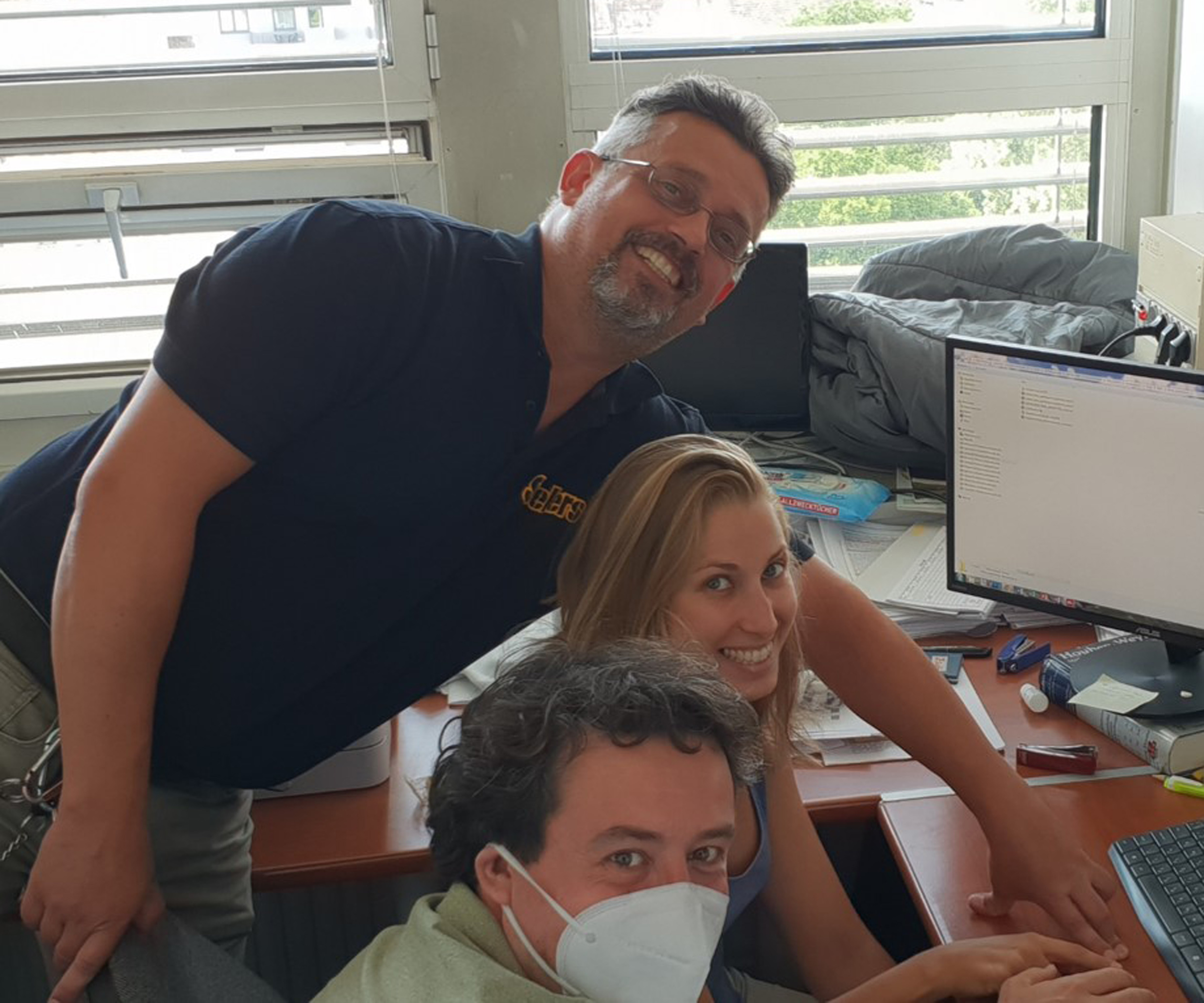
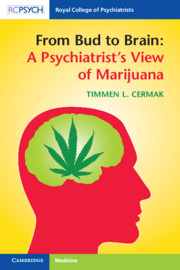 n and use of cannabis, Cambridge University Press has published a concise textbook for health care practitioners, educators and the general public about the medical and adverse effects of cannabis. The book is written by Timmen L. Cermak, an American psychiatrist and Past-President of the California Society of Addiction Medicine.
n and use of cannabis, Cambridge University Press has published a concise textbook for health care practitioners, educators and the general public about the medical and adverse effects of cannabis. The book is written by Timmen L. Cermak, an American psychiatrist and Past-President of the California Society of Addiction Medicine.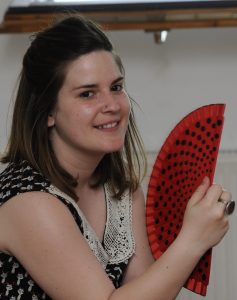

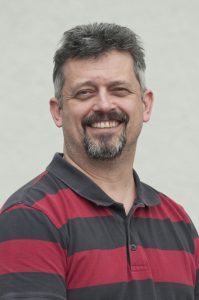

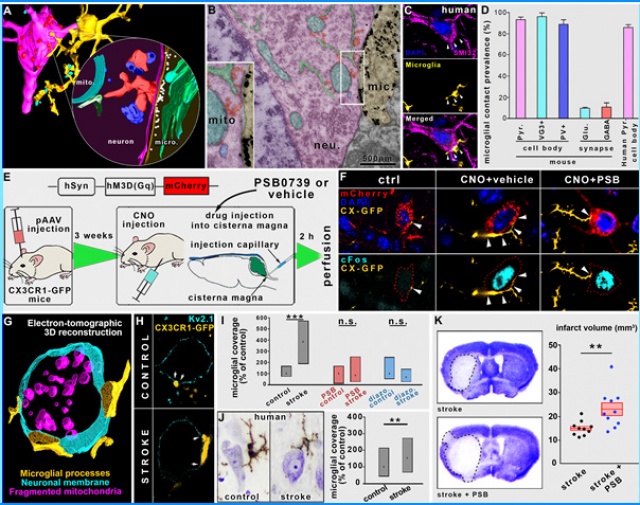
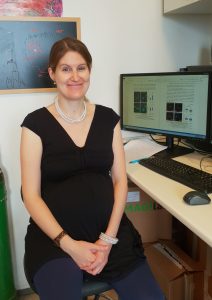 We are proud that Vivien Miczán, a graduate student in our team is shared first-author of the paper. Most importantly, as an expert of maternal projects, Vivi just became the mother of a beautiful boy! Congratulations to Vivi and we wish you and your family all the best in your family life too!
We are proud that Vivien Miczán, a graduate student in our team is shared first-author of the paper. Most importantly, as an expert of maternal projects, Vivi just became the mother of a beautiful boy! Congratulations to Vivi and we wish you and your family all the best in your family life too!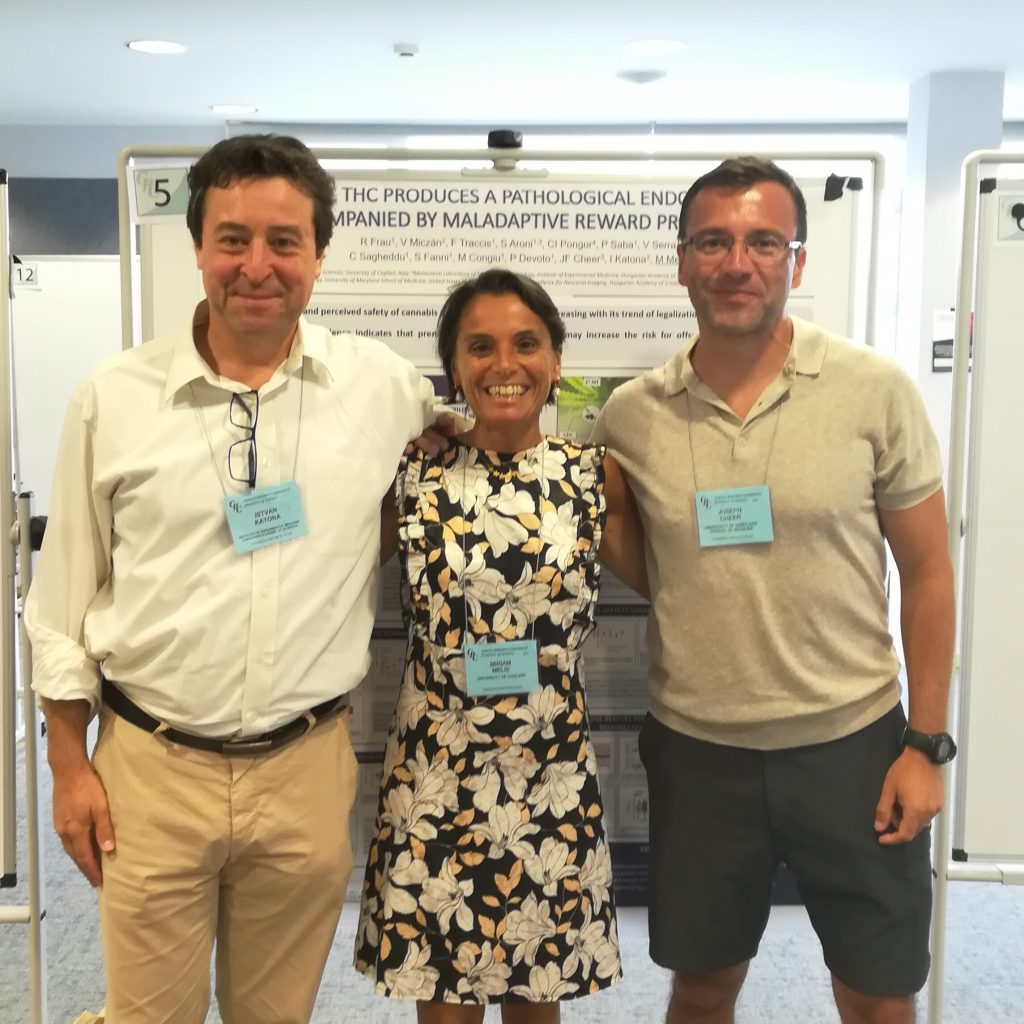
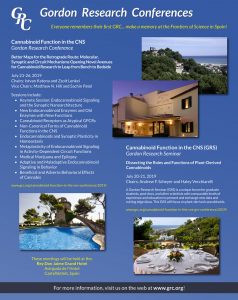

 Special merit goes to Vivien Miczán who has supervised the work of both students, so this success is also a proof of her outstanding mentoring skills.
Special merit goes to Vivien Miczán who has supervised the work of both students, so this success is also a proof of her outstanding mentoring skills.

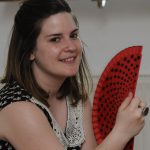 Ana has spent more than 3 years with us and now she is continuing her carreer in the laboratory of Prof. Susana Mato with a postdoctoral fellowship sponsored by the Basque Country at the Achucarro Basque Center for Neuroscience.
Ana has spent more than 3 years with us and now she is continuing her carreer in the laboratory of Prof. Susana Mato with a postdoctoral fellowship sponsored by the Basque Country at the Achucarro Basque Center for Neuroscience.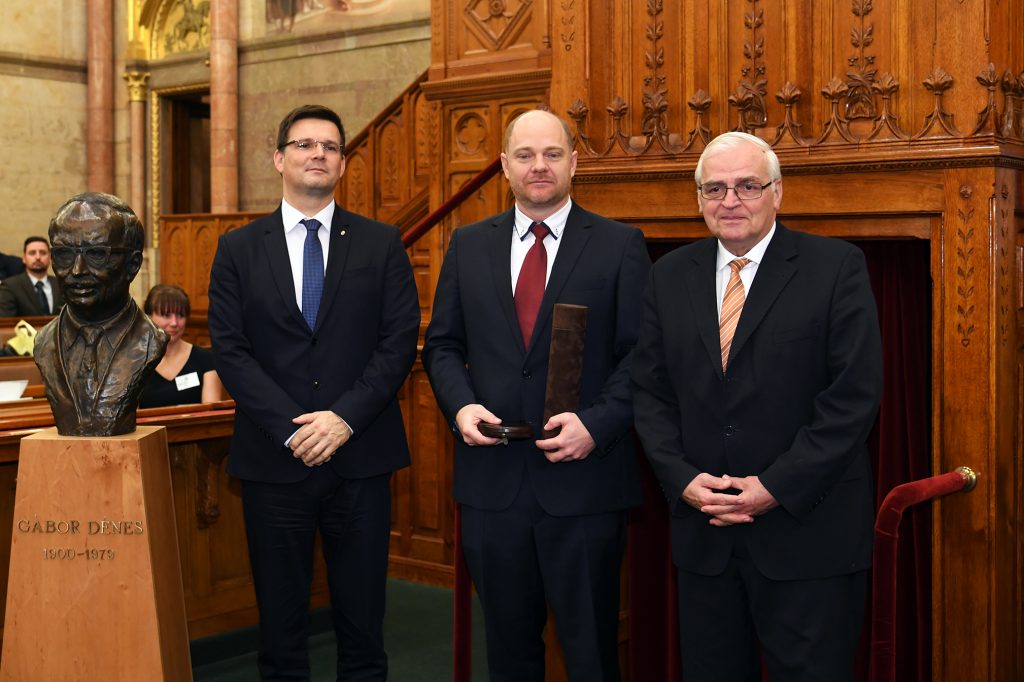
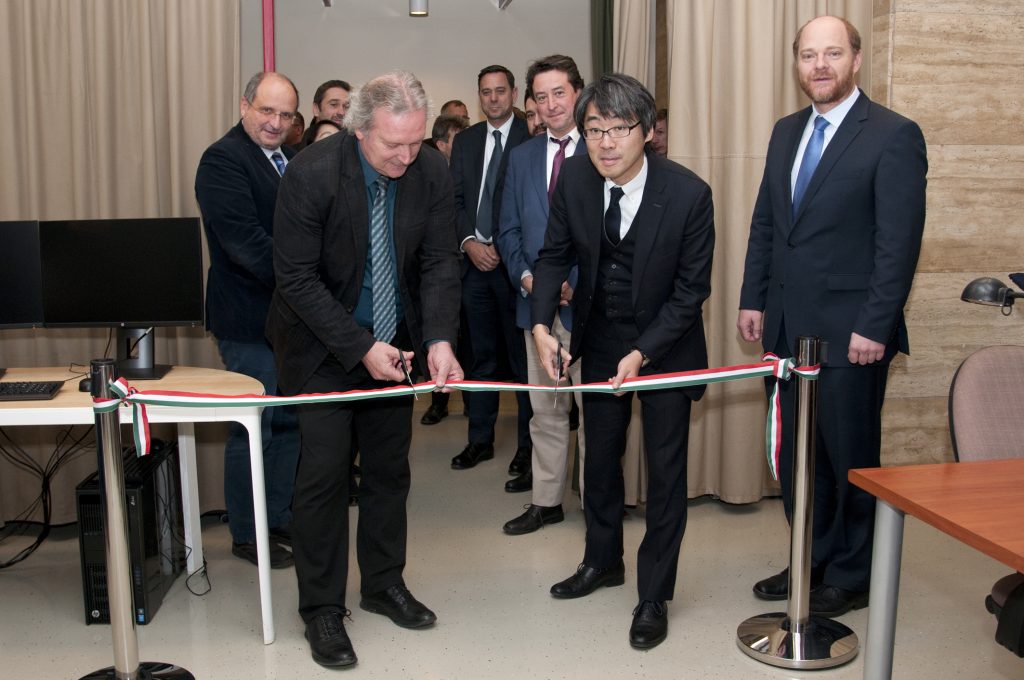
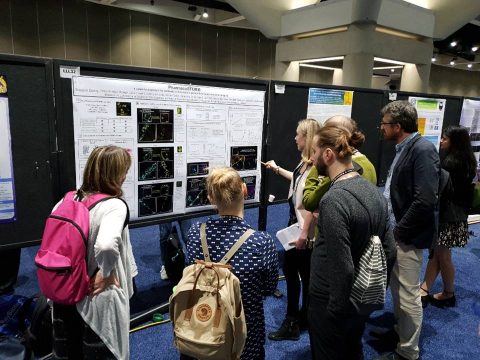
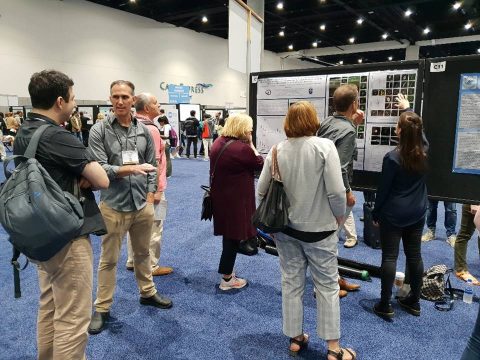
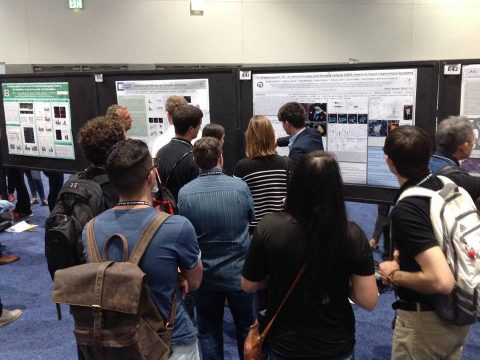
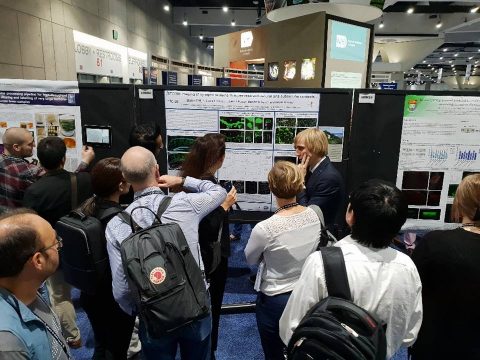

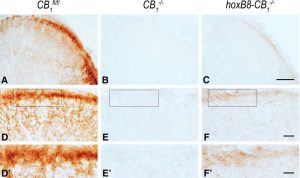
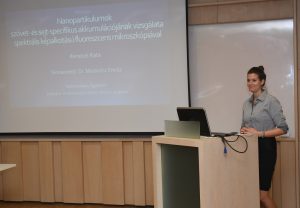 Kata did her PhD studies at the Semmelweis University Molecular Medicine Doctoral School under the supervision of Prof. Emília Madarász. The title of her doctoral thesis is: Tissue- and cell-type specific compartmentalization of surface-modified fluorescent nanoparticles: „Enhanced detection with spectral imaging fluorescence microscopy.”
Kata did her PhD studies at the Semmelweis University Molecular Medicine Doctoral School under the supervision of Prof. Emília Madarász. The title of her doctoral thesis is: Tissue- and cell-type specific compartmentalization of surface-modified fluorescent nanoparticles: „Enhanced detection with spectral imaging fluorescence microscopy.”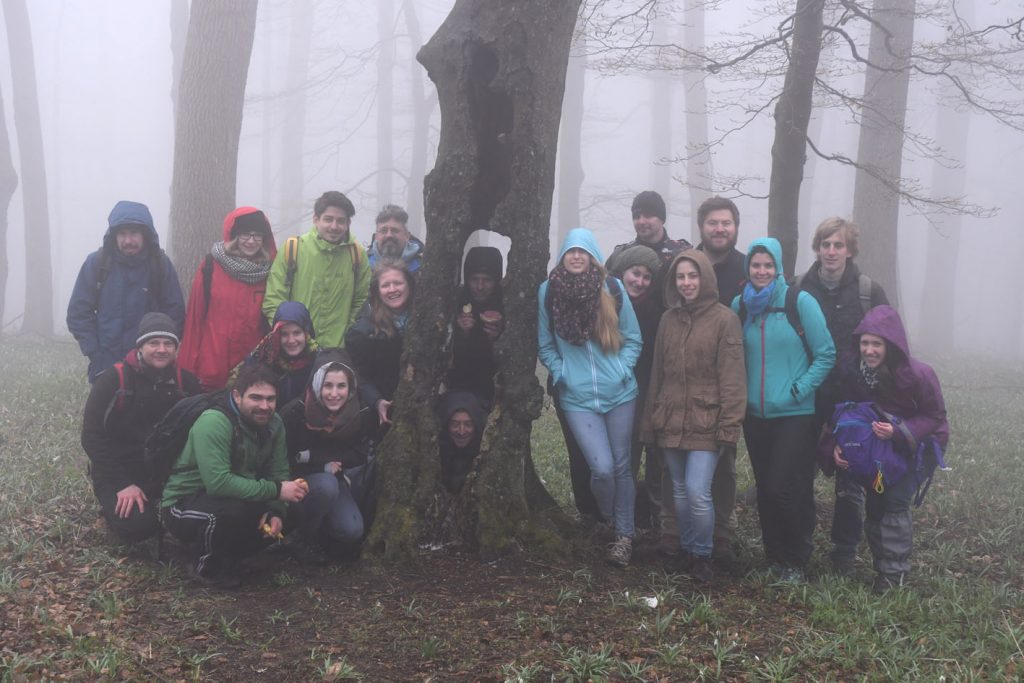
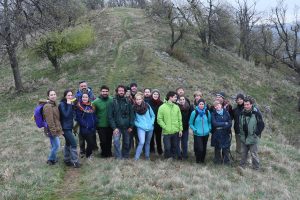
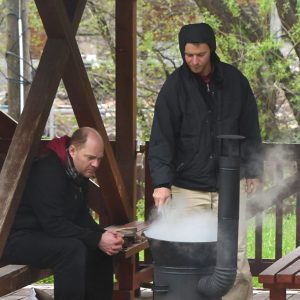
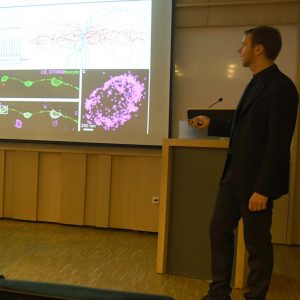


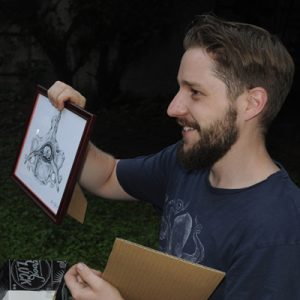 After four years of successfull postdoc work in the Katona lab, Steve Woodhams is now continuing his carreer in the laboratory of Professor Victoria Chapman at the University of Nottingham. His work in the Katona lab focused on identifying the cell type specific distribution of the endocannabinoid signalling system’s components in the spinal cord. He also participated in several other projects of the group and got familiar with the STORM superresolution microscopy technique.
After four years of successfull postdoc work in the Katona lab, Steve Woodhams is now continuing his carreer in the laboratory of Professor Victoria Chapman at the University of Nottingham. His work in the Katona lab focused on identifying the cell type specific distribution of the endocannabinoid signalling system’s components in the spinal cord. He also participated in several other projects of the group and got familiar with the STORM superresolution microscopy technique.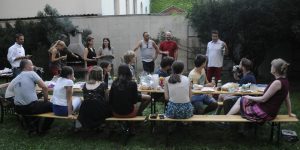 We all had a great time at this late summer BBQ party in the garden of the institute. As a farewell present, we surprised Steve with an old Hungarian game: the Button Soccer. The game has been redesigned to feature all the lab members as players of the two soccer teams.
We all had a great time at this late summer BBQ party in the garden of the institute. As a farewell present, we surprised Steve with an old Hungarian game: the Button Soccer. The game has been redesigned to feature all the lab members as players of the two soccer teams.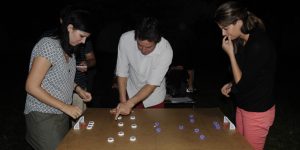
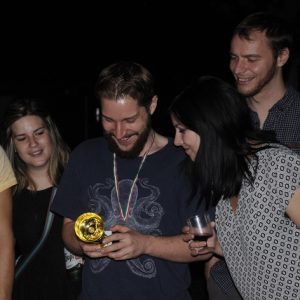
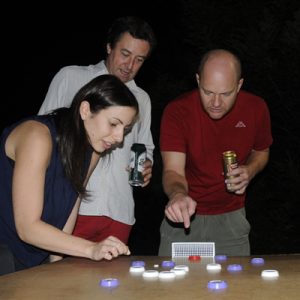
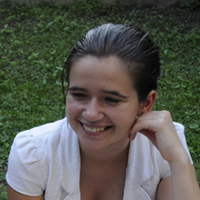 Ágnes is a talented 11th grade student from the Ferences Gimnázium in Szentendre, who won the second prize at the Ramon y Cajal competition founded by Peter Somogyi from the University of Oxford, Department of Pharmacology. Her reward was to spend a month as a student-researcher in a laboratory at the Institute of Experimental Medicine.
Ágnes is a talented 11th grade student from the Ferences Gimnázium in Szentendre, who won the second prize at the Ramon y Cajal competition founded by Peter Somogyi from the University of Oxford, Department of Pharmacology. Her reward was to spend a month as a student-researcher in a laboratory at the Institute of Experimental Medicine.